Arts & Entertainment
Images of an era
‘Our Heroes’ exhibit shows AIDS impact on D.C.
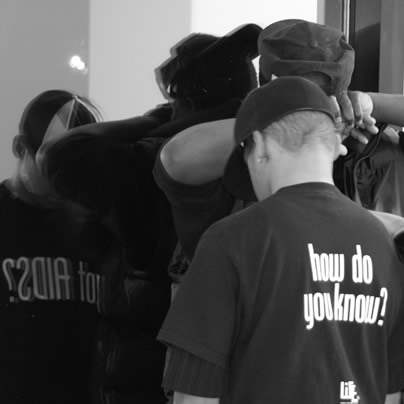
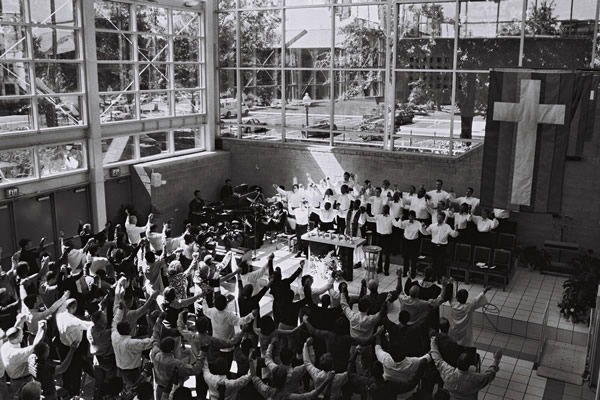
Photo of the Metropolitan Community Church from the ‘Our Heroes’ exhibit. (Photo by Kevin Kenner; courtesy Kenner)
“Our Heroes,” a community-donated photography exhibit that chronicles the HIV/AIDS history in the District, opens at the Martin Luther King Jr. Memorial Library (901 G St., N.W.) Monday and runs through Jan. 5.
Our Heroes has been a work in progress since 2002. Nine photographers, all of whom are D.C. residents, have documented notable people and places in D.C.’s HIV/AIDS history. The all-black and white photos were displayed in 2006 in a collection of 150 photos. Now, with new pieces added, the collection totals 205 photographs. Biographies accompany the photographs and are all written in first person. It’s as if the people are speaking directly to the visitor and adds a personal connection of past to present. Organizers say it’s the only photography exhibit of its kind in the United States.
Lead organizer Wallace Corbett, a gay man who has been HIV positive since 1989, says “Our Heroes” aims to archive the HIV/AIDS journey by showing the people whose stories are being told and the places at which these monumental events took place. The variety of the photos makes for a diverse history lesson.
“We took the time to document a very long and meticulous journey,” Corbett says. “Some of the pictures are very emotional, some are self-explanatory and some are artistic. The District should be proud that they can go back 50 years from now and understand its journey and who was apart of it, especially for black culture.”
Corbett says his favorite photograph in the exhibit is of a man pushing his dead lover’s body in a coffin over the fence of the White House during the Reagan administration. Along the edges of the photo stand men wearing latex gloves who are afraid to touch the body.
“It was that man’s way of saying to the president this is what is happening in your backyard,” Corbett says. “If you can’t come to the funeral, we will bring the funeral to you.”
Lead photographer Kevin Kenner, also a gay man who is HIV positive, says the photographs were not all easy to come by. Historical photographs of those who had passed away had to be acquired from family members. There was a verification process to confirm the people had contributed to the city’s history in some way.
Some photographs were damaged and had to be replaced. Other photographs were difficult to take such as the one of Enik Alley Coffeehouse, once located on I Street. Since the coffeehouse was out of business and those who had frequented it were long gone, the iconic space that once welcomed LGBT music and literature icons like Essex Hemphill and Michelle Parkerson had been lost.
Kenner hopes the exhibit can serve as a reminder of Washington’s past and help young people shape a different future. He’s saddened that some of the people he met and photographed are no longer here. He says his own HIV experience and those of others has taught him to stop living recklessly. He wants to teach young people to be safer about their decisions.
“The journey has come a long way but still the HIV/AIDS rate is so high,” Kenner says. “I see a lot of young people acting unsafe and uncaring about their life. If you’re going to do things that are not safe than you have to be an adult and deal with the consequences that come about. We need to teach young people to be safe and hopefully people will be aware this journey is still going on and hasn’t ended.”
The exhibit will be displayed on the lower level of the library. After its run, the library will permanently own the exhibit.
“Most people have footsteps in the sand and don’t understand the importance of the footprints until the water washes over them,” Corbett says. “This way those footprints are still there and we won’t forget where we’ve been and we can hopefully see where we’re going.”
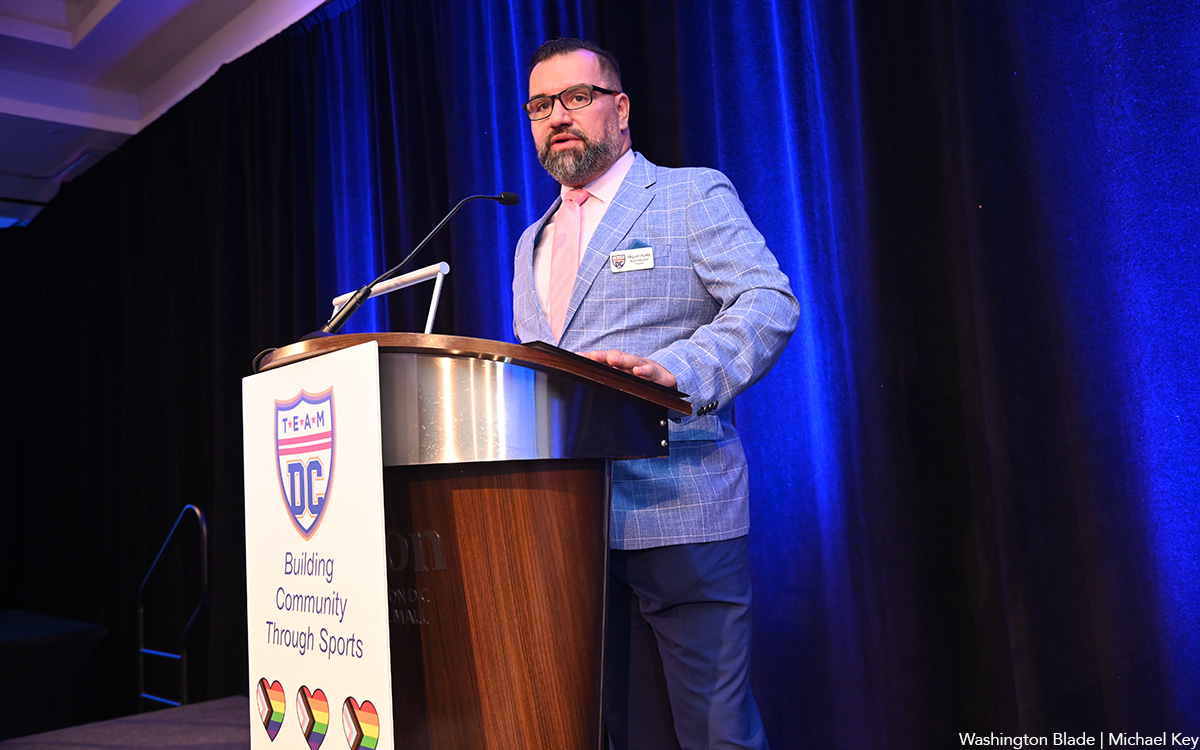
Team DC, the umbrella organization for LGBTQ-friendly sports teams and leagues in the D.C. area, held its annual Night of Champions Awards Gala on Saturday, April 20 at the Hilton National Mall. The organization gave out scholarships to area LGBTQ student athletes as well as awards to the Different Drummers, Kelly Laczko of Duplex Diner, Stacy Smith of the Edmund Burke School, Bryan Frank of Triout, JC Adams of DCG Basketball and the DC Gay Flag Football League.
(Washington Blade photos by Michael Key)
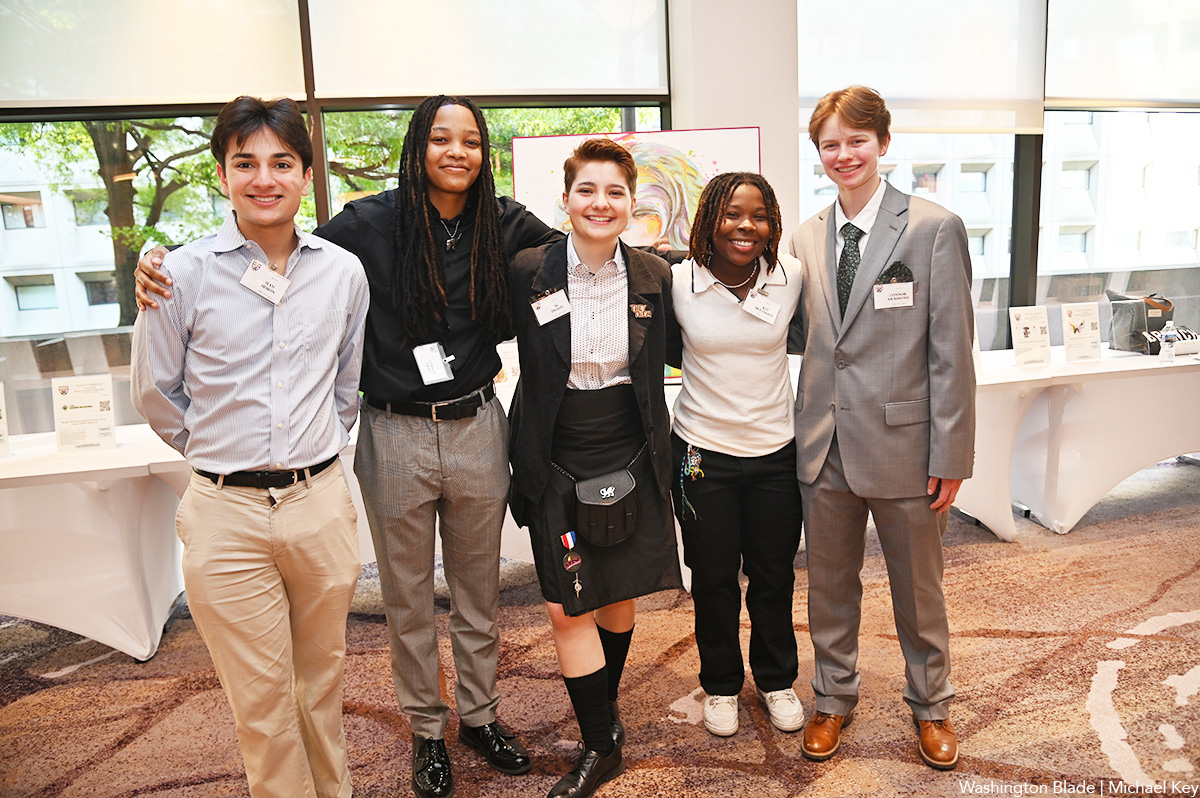
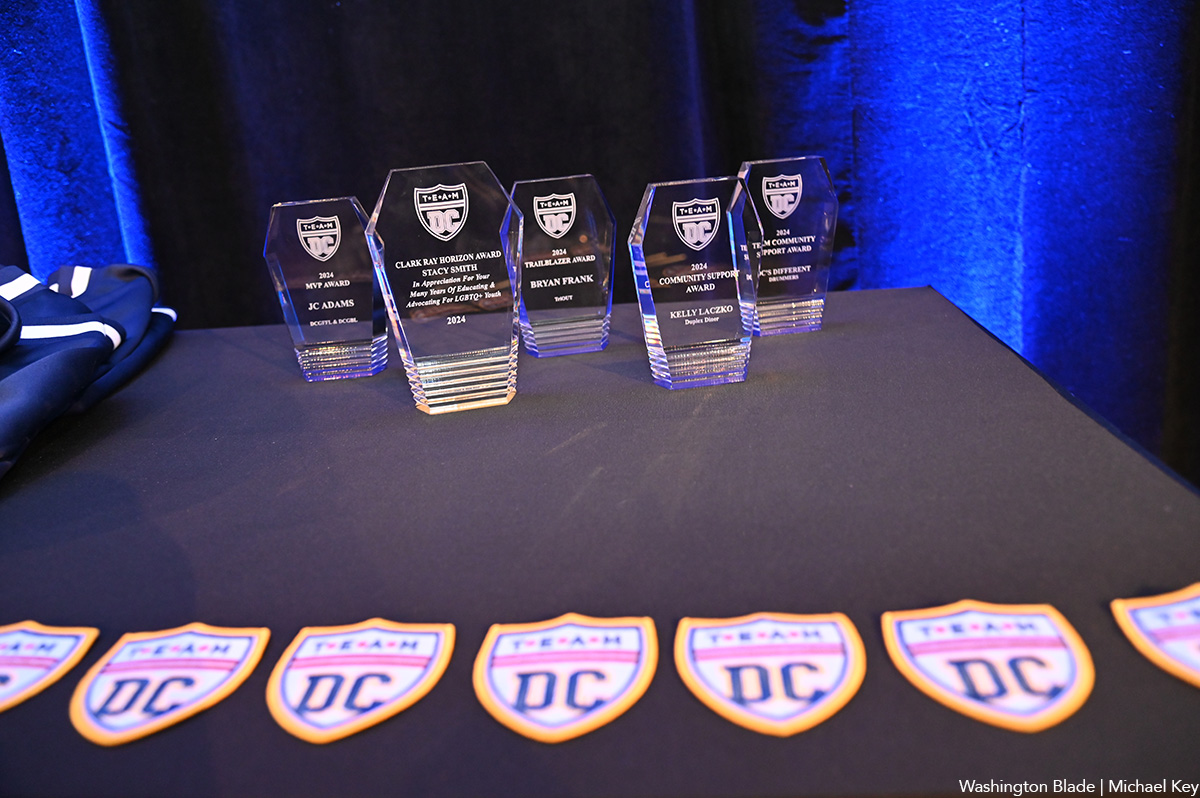
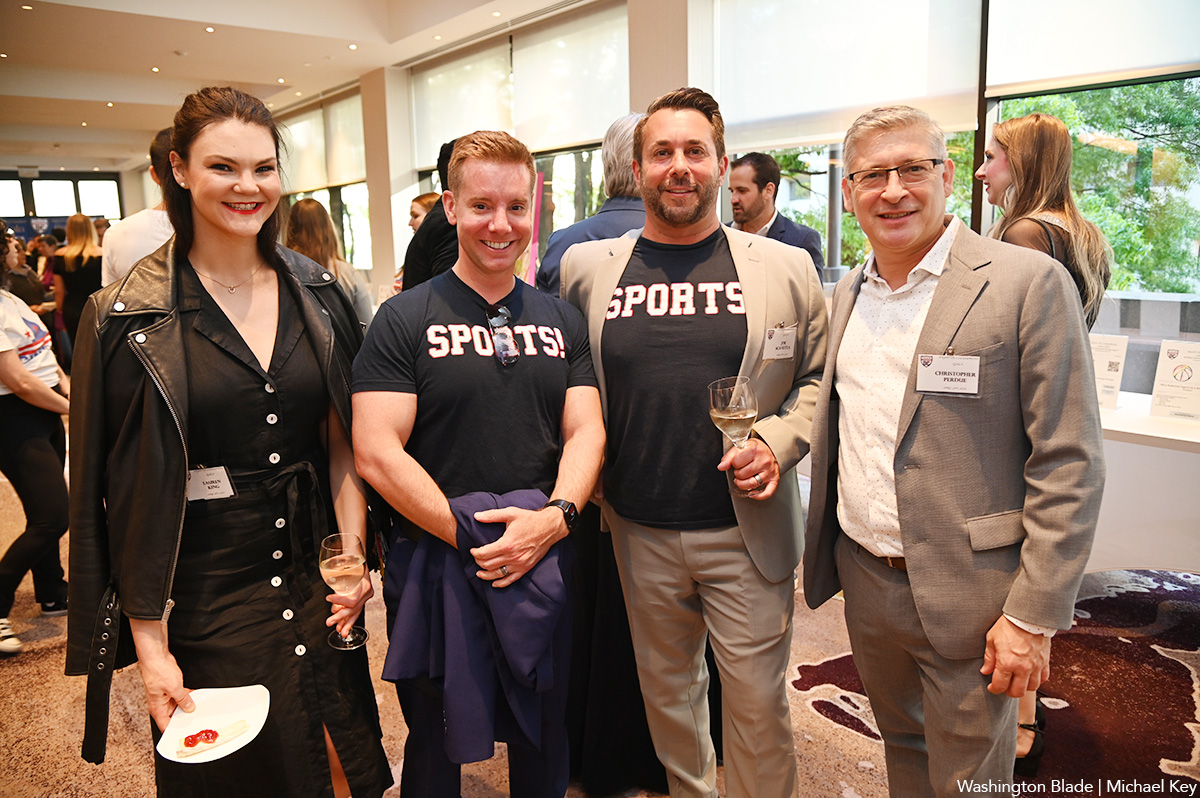
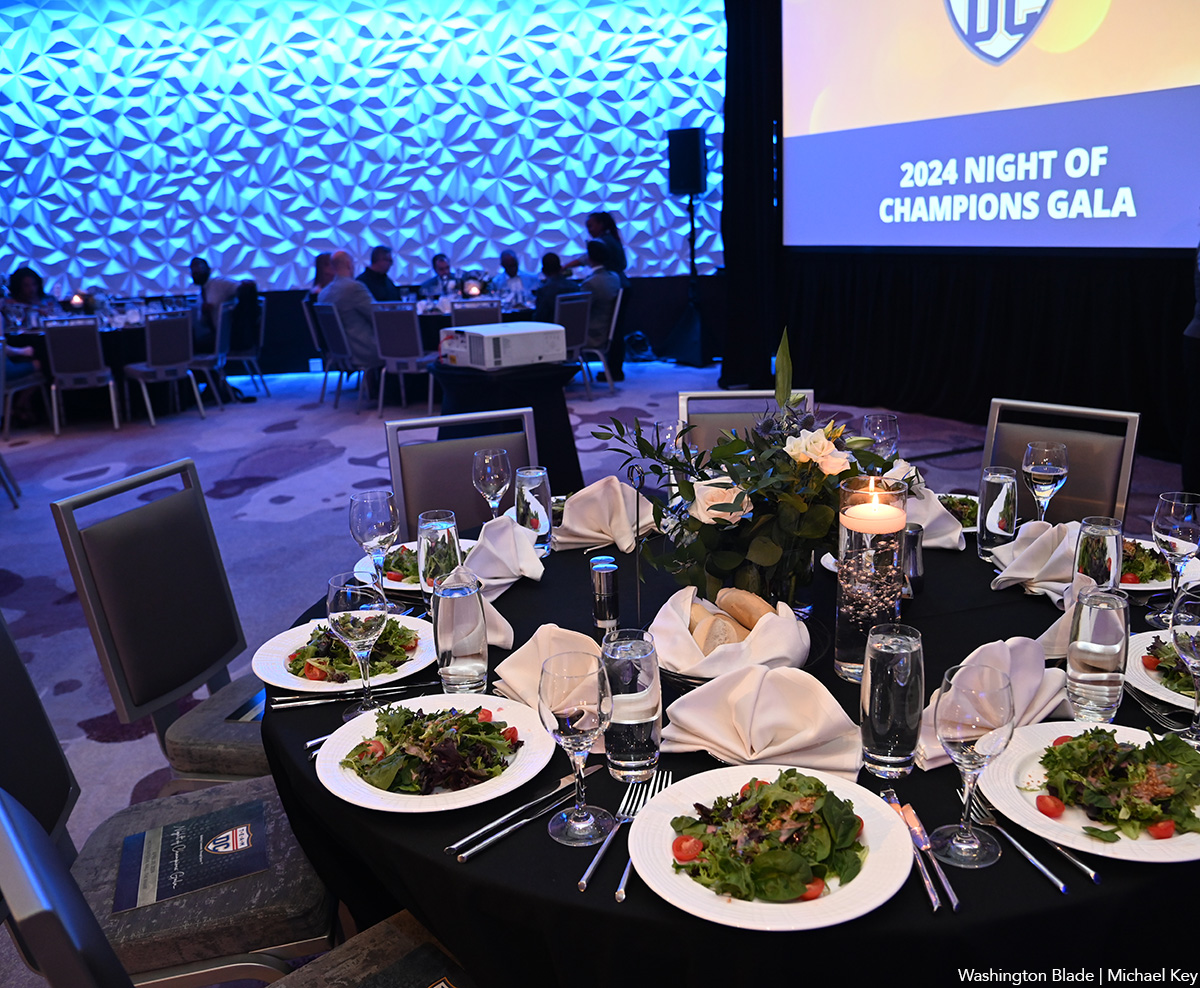
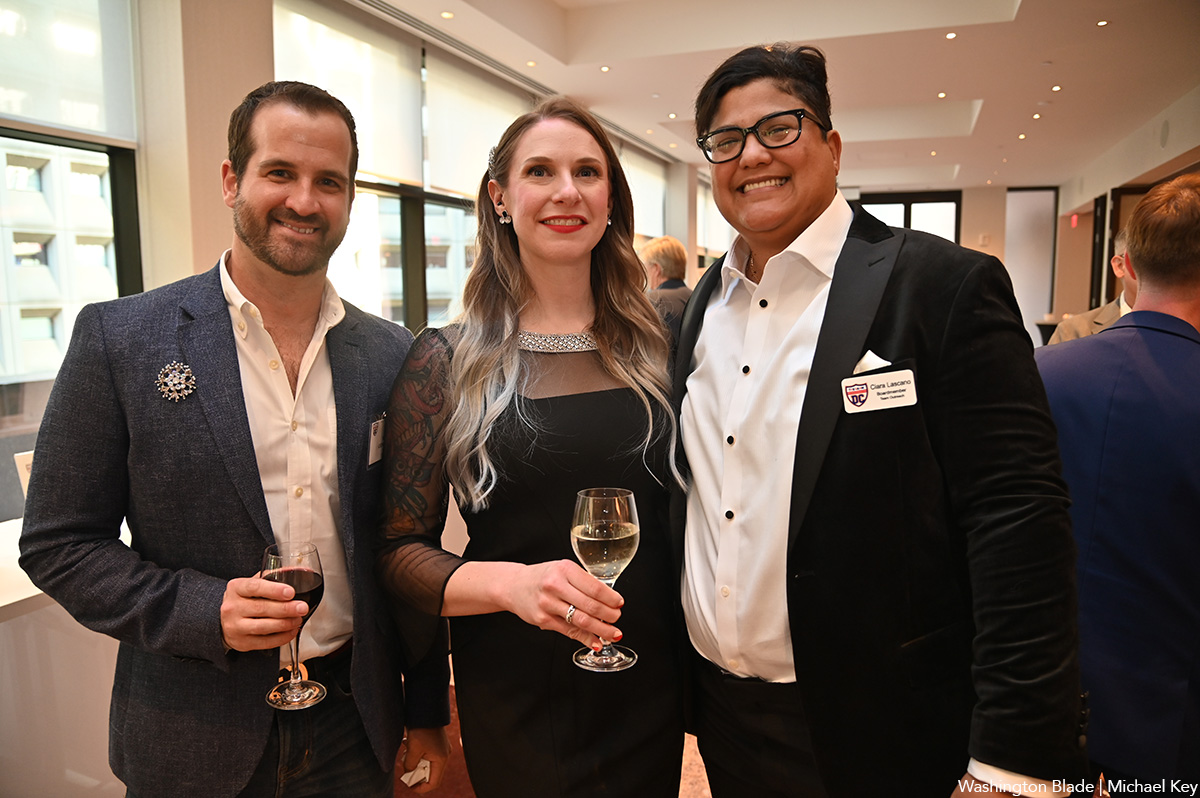
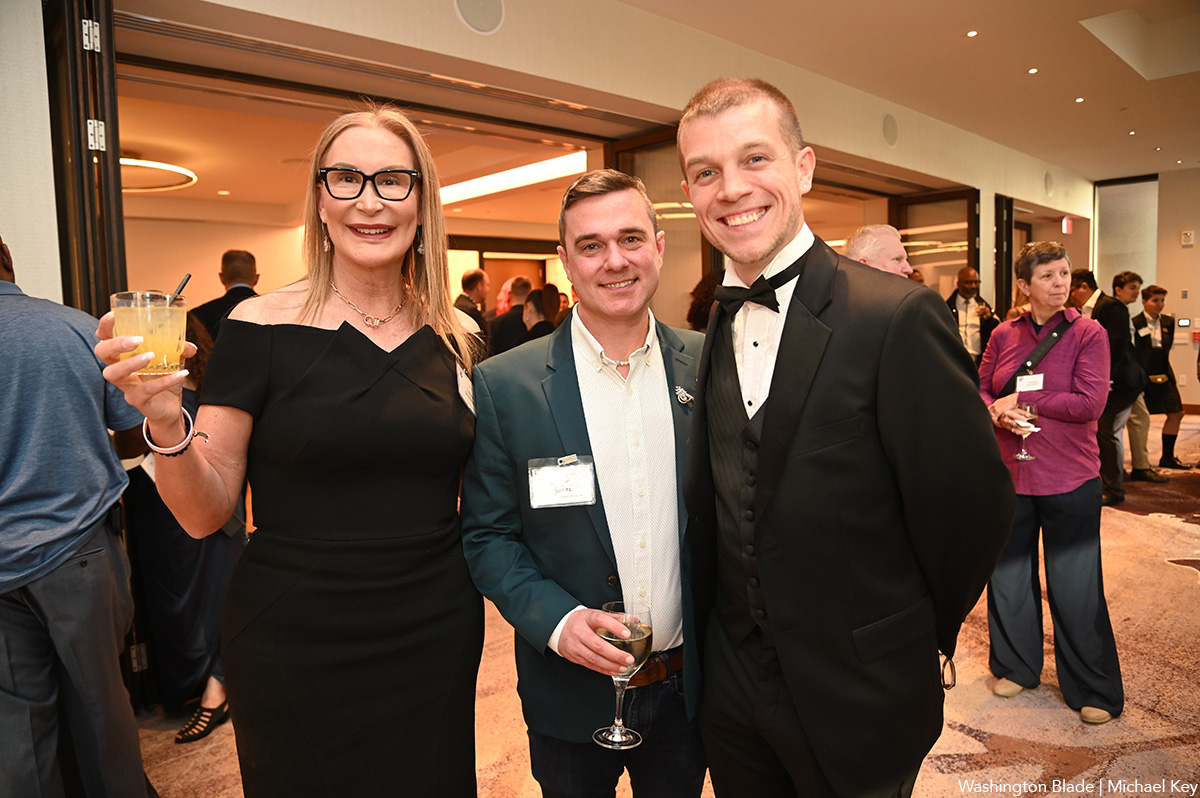
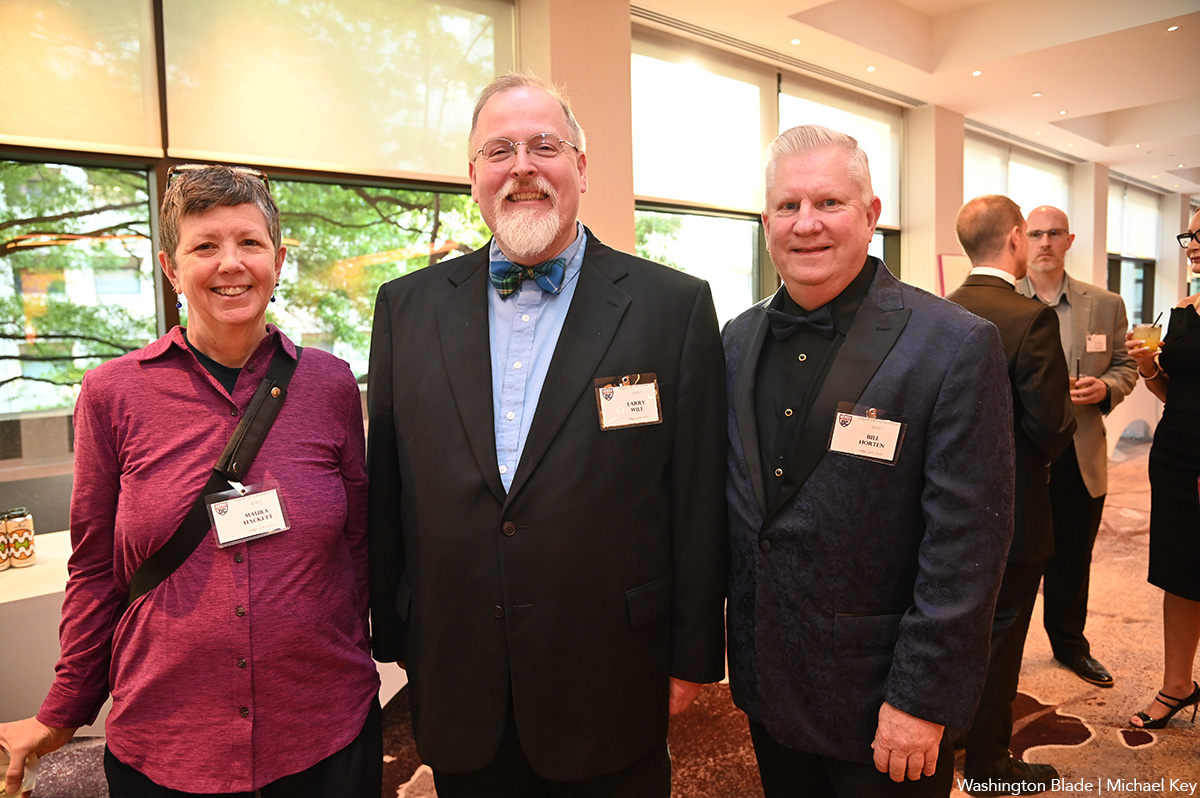
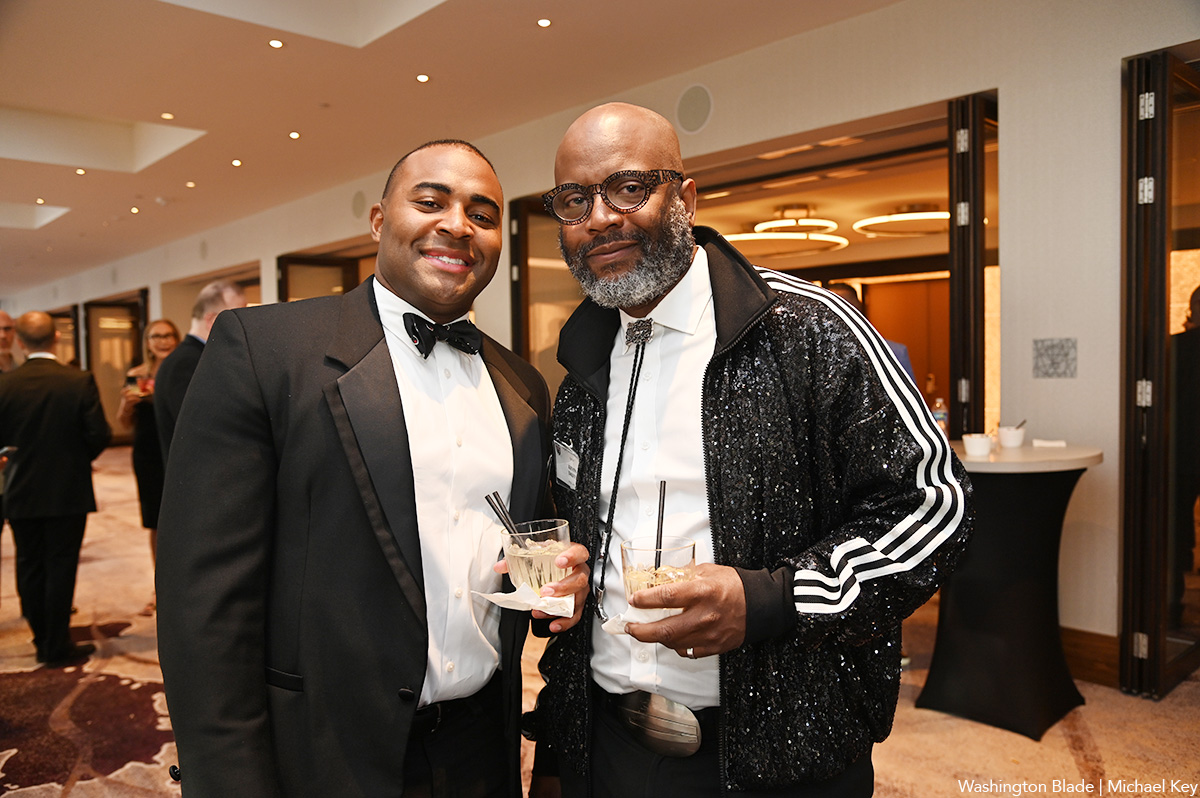
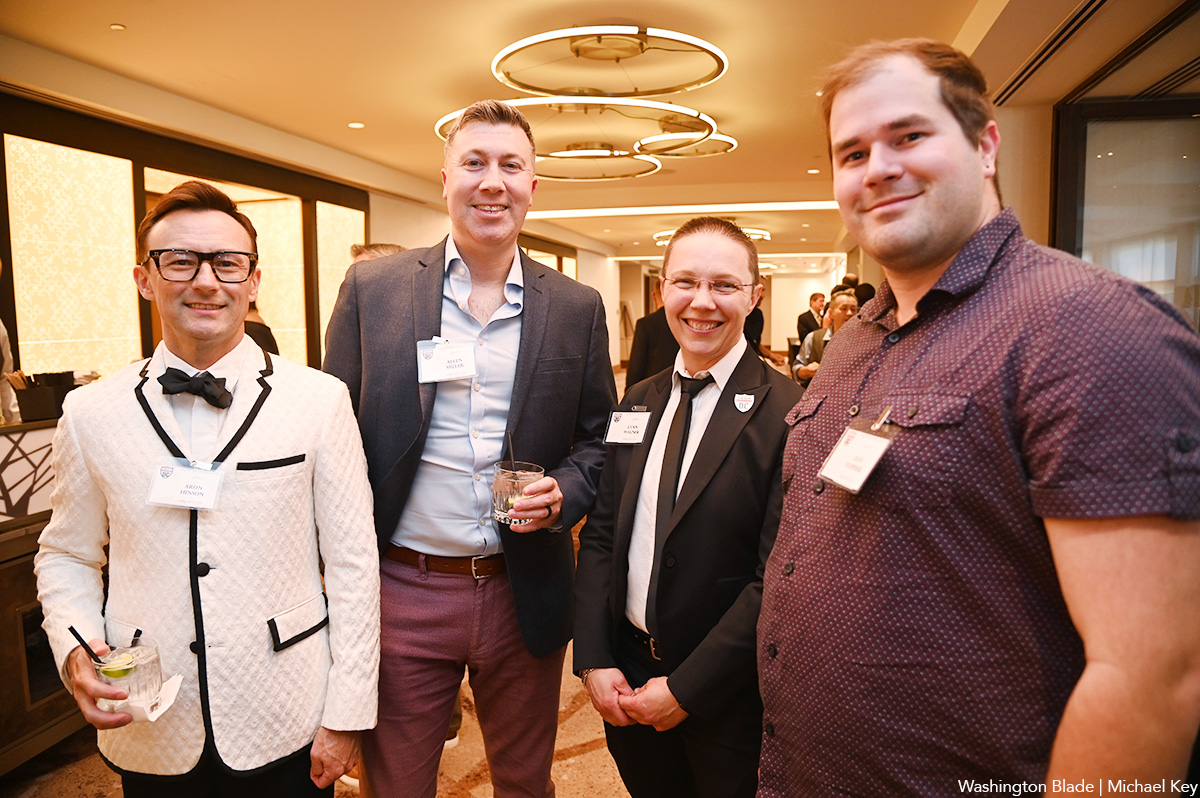
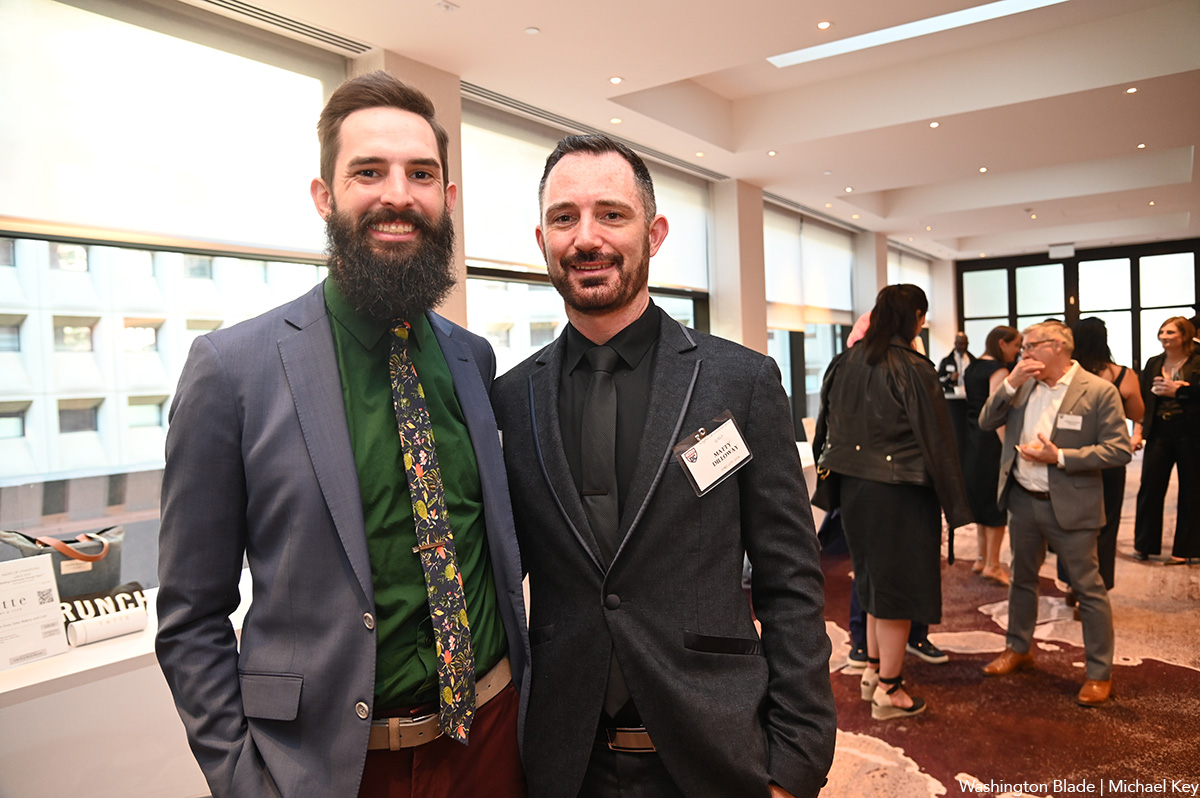
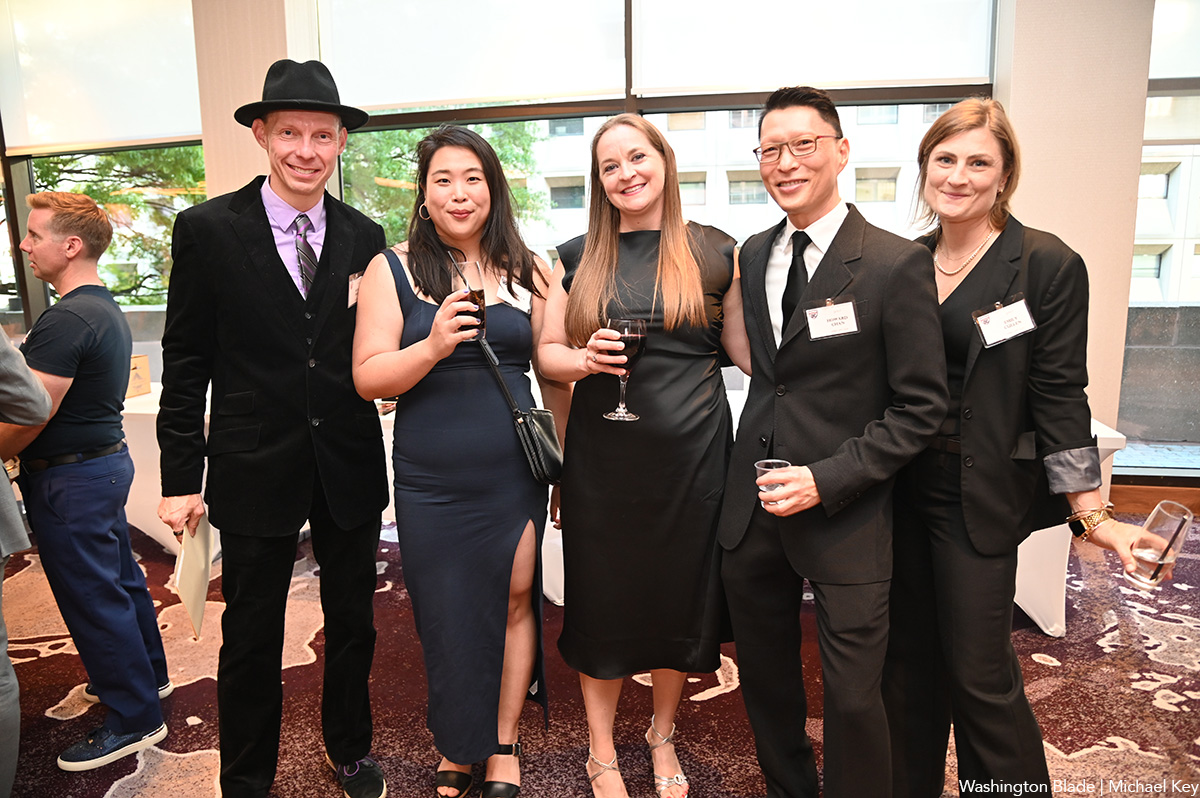
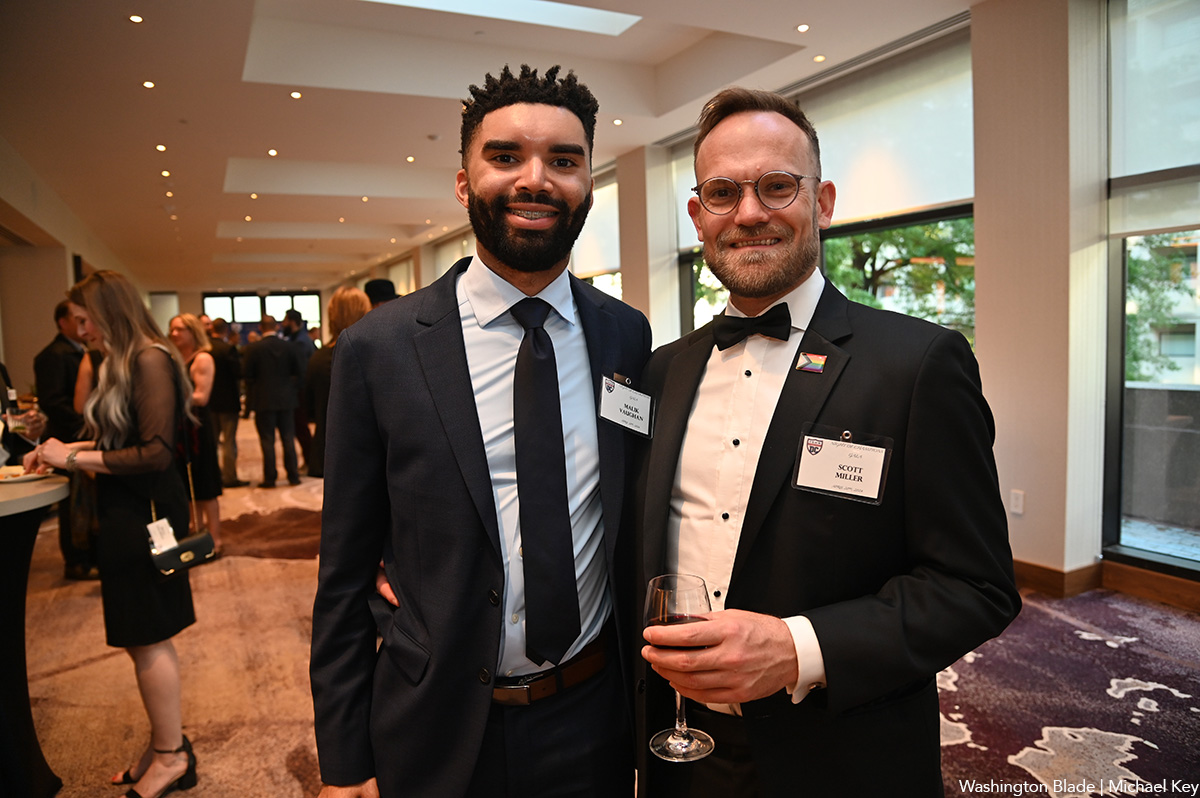
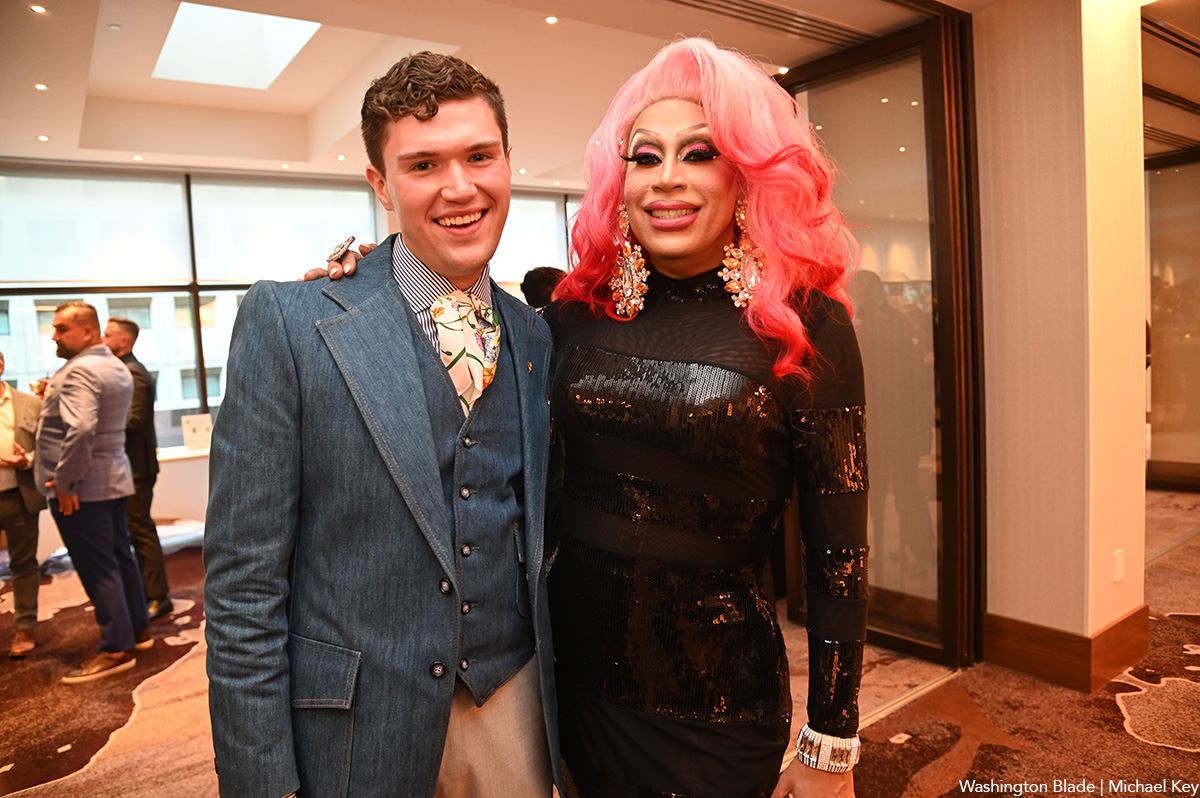
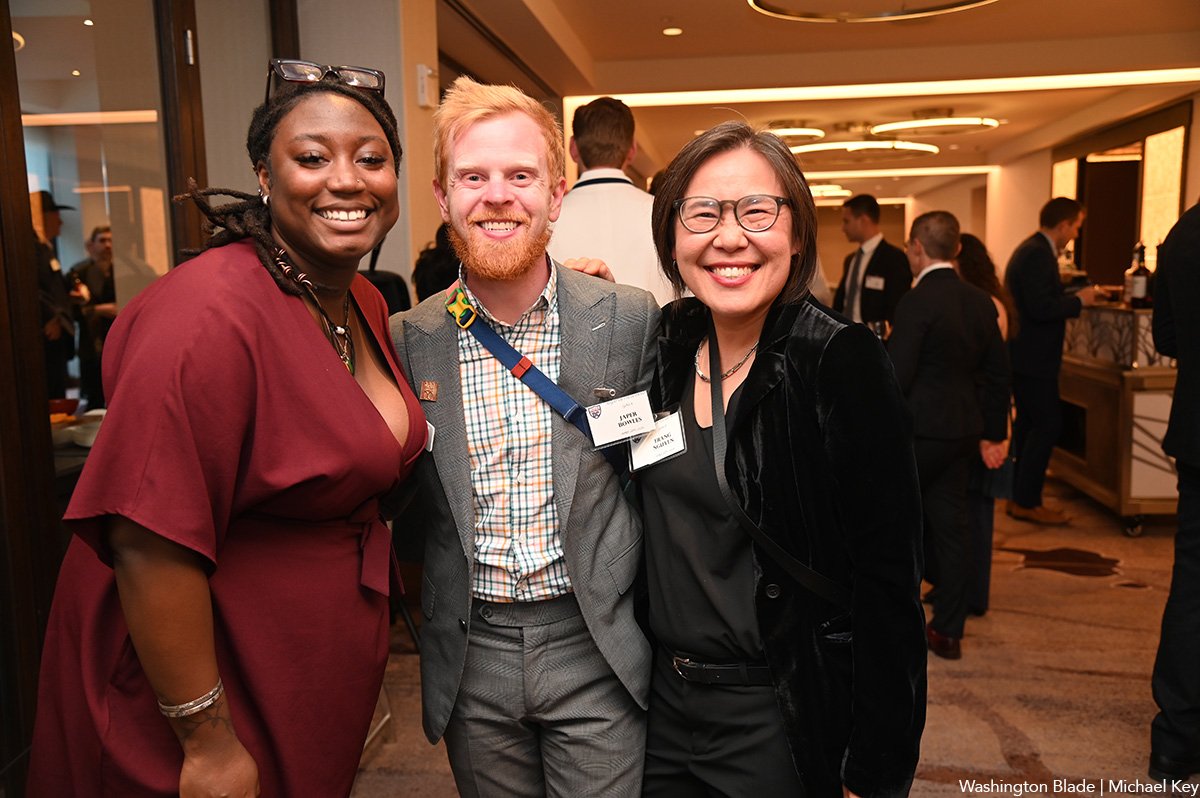
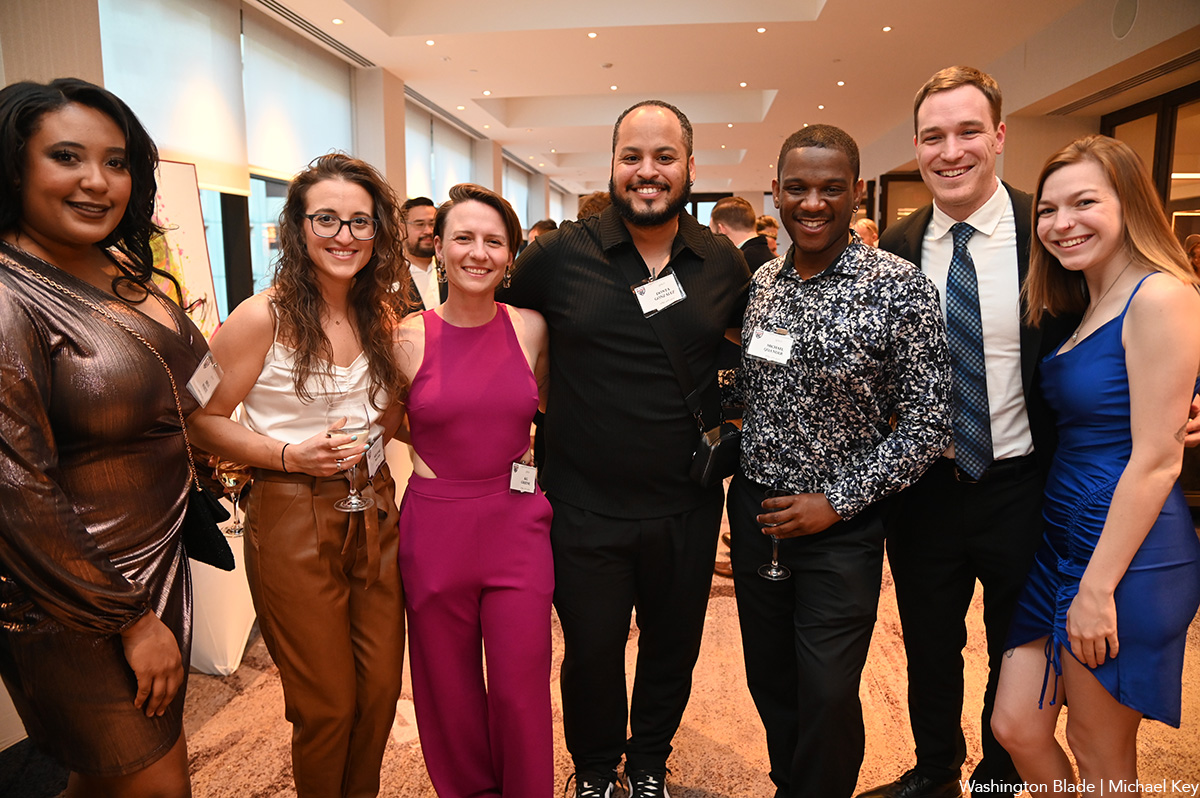
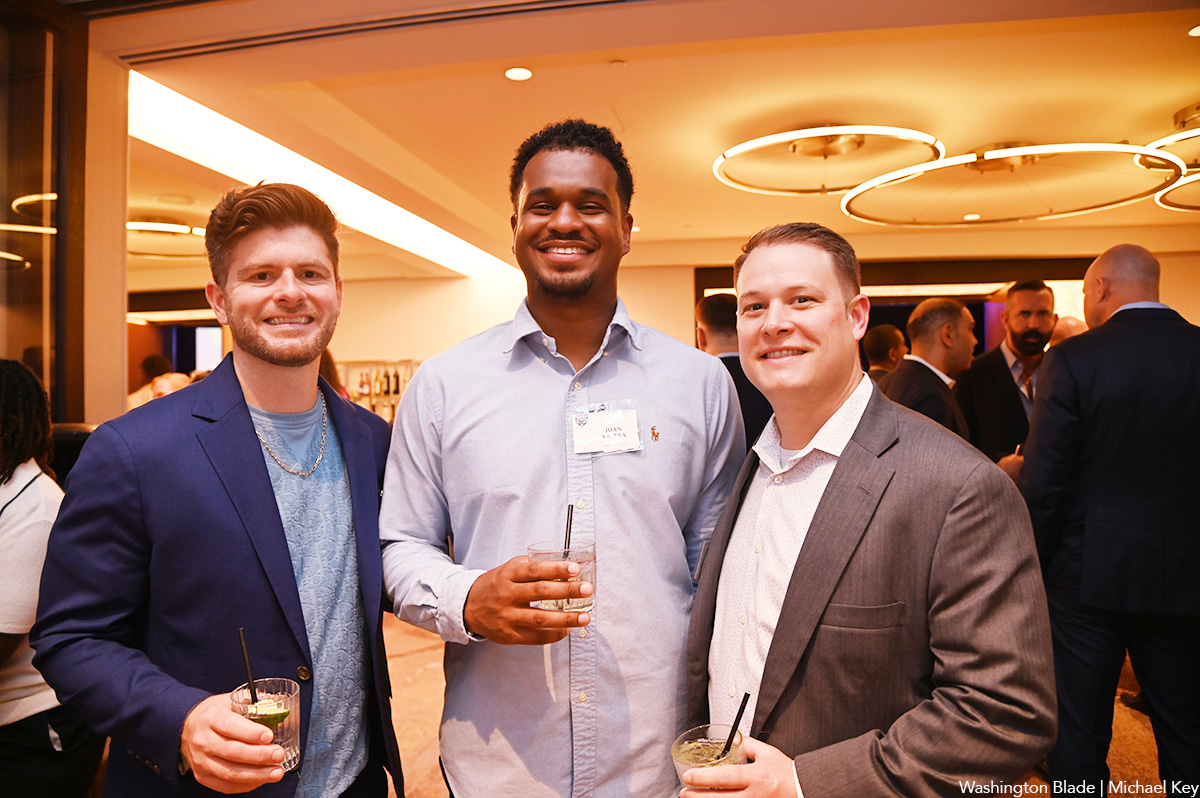
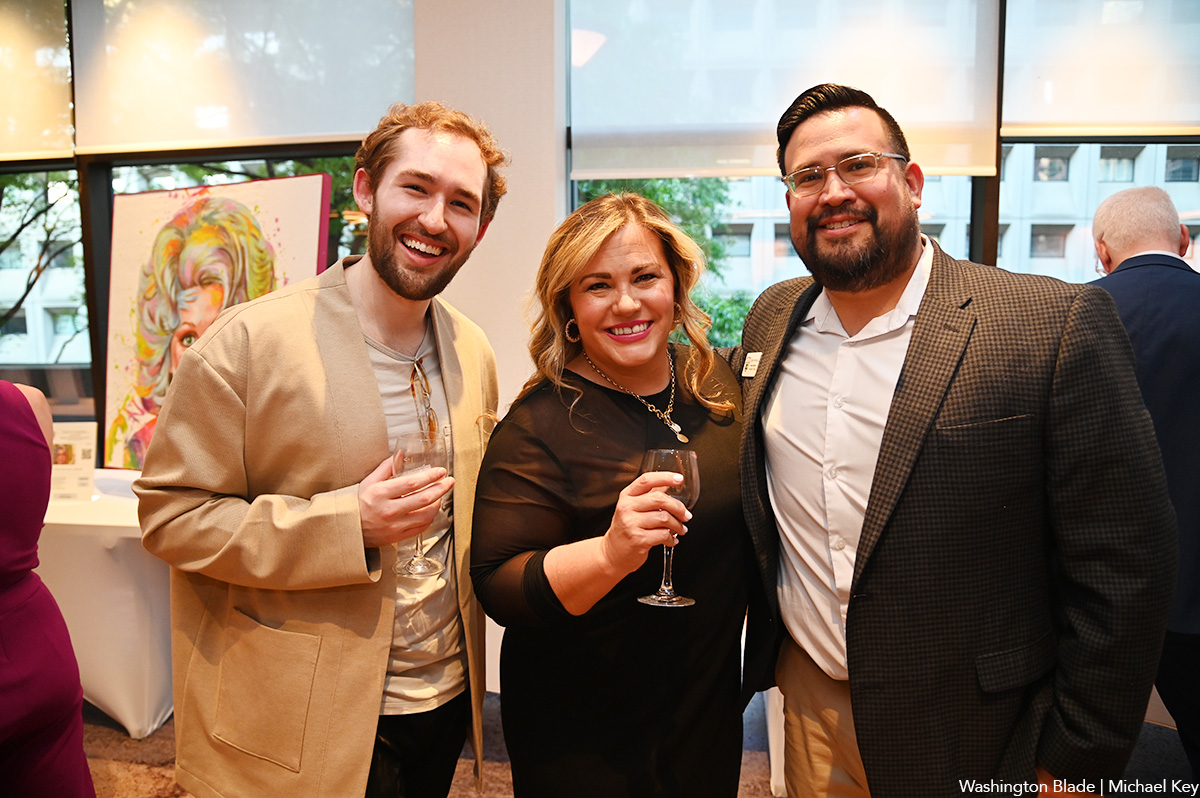
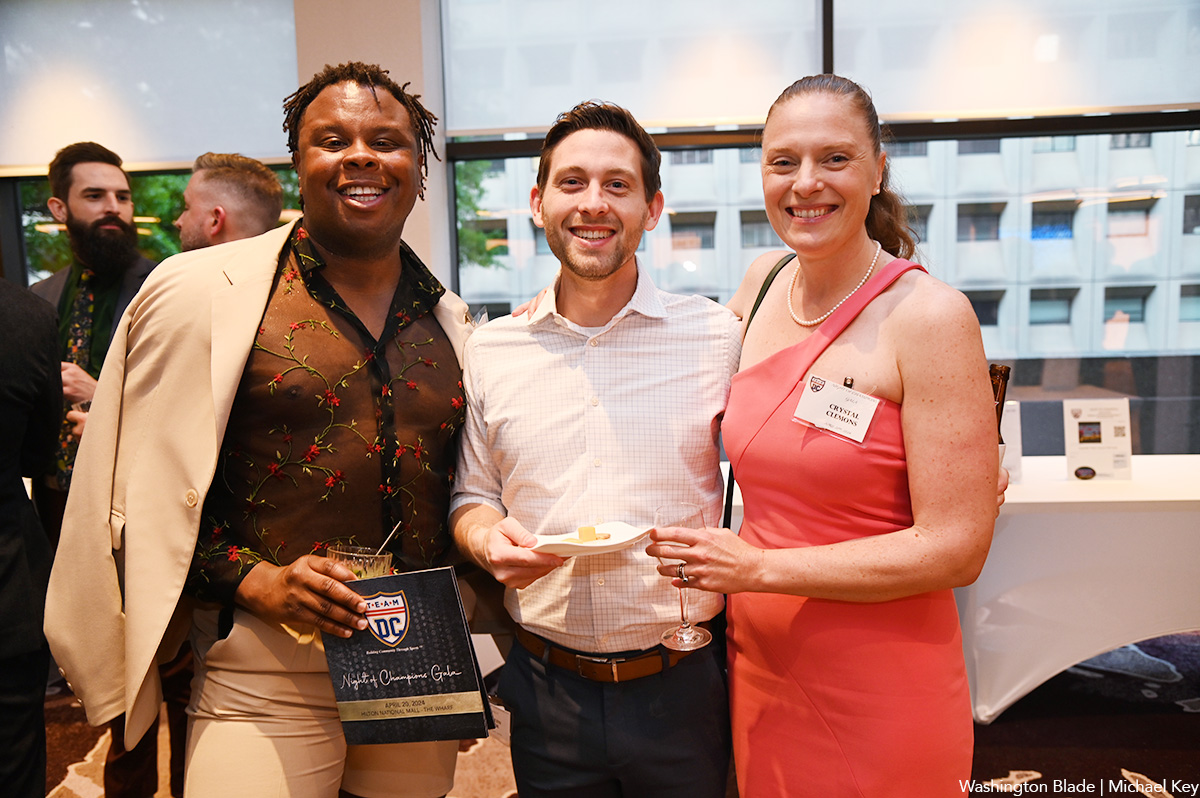
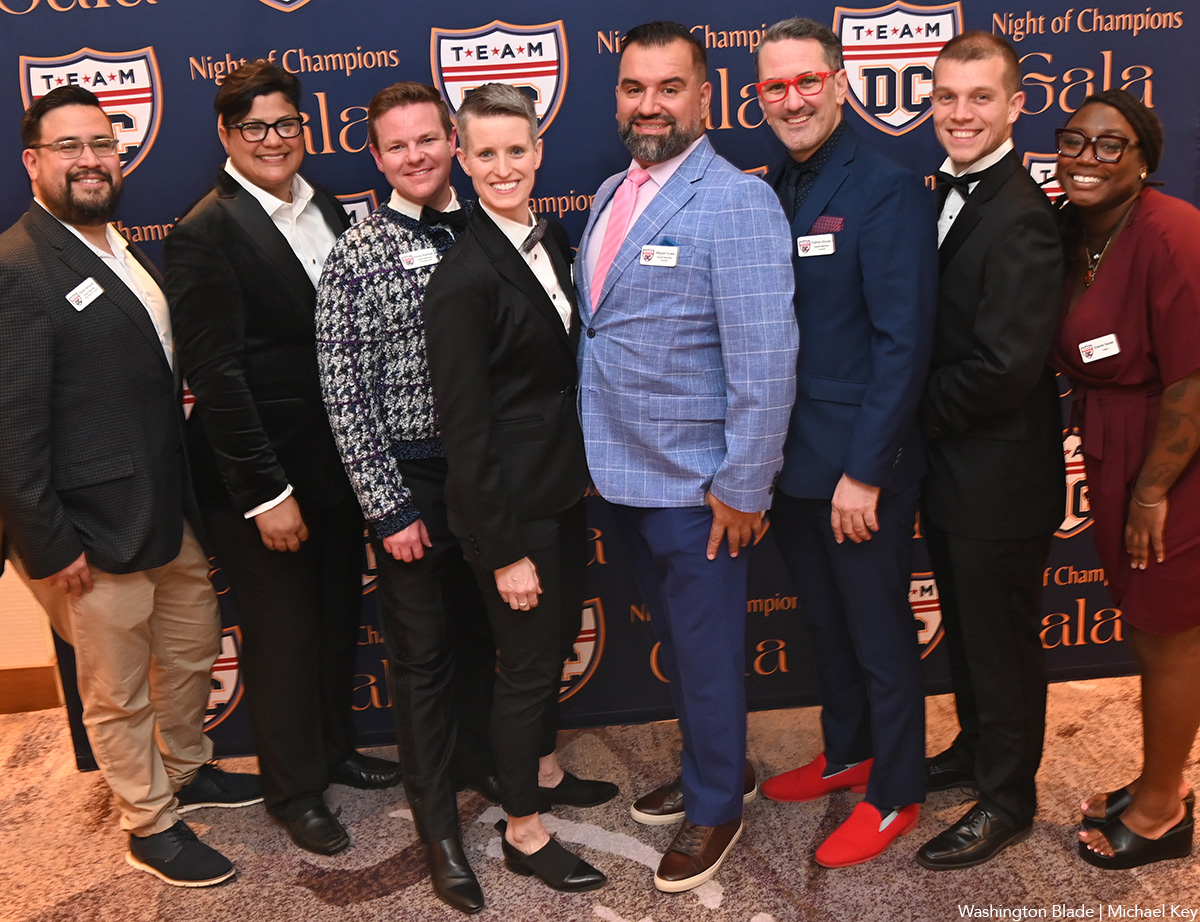
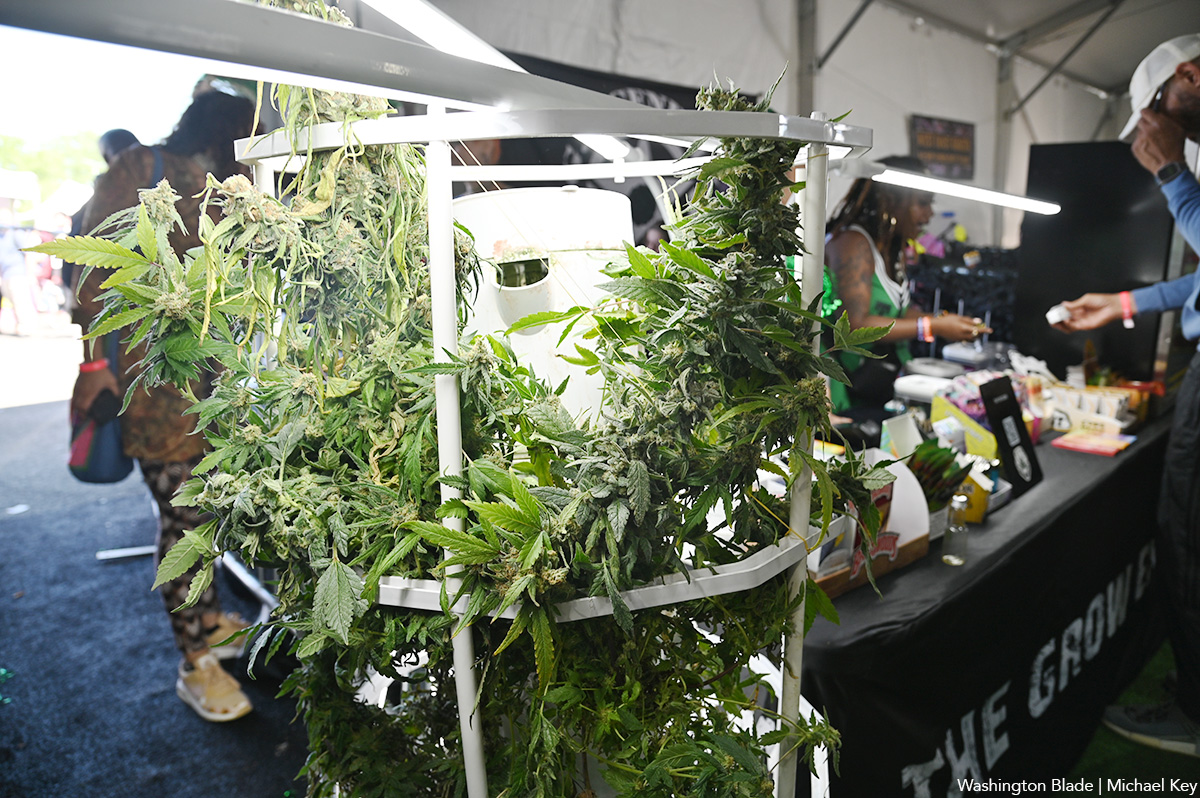
The 2024 National Cannabis Festival was held at the Fields at RFK Stadium on April 19-20.
(Washington Blade photos by Michael Key)
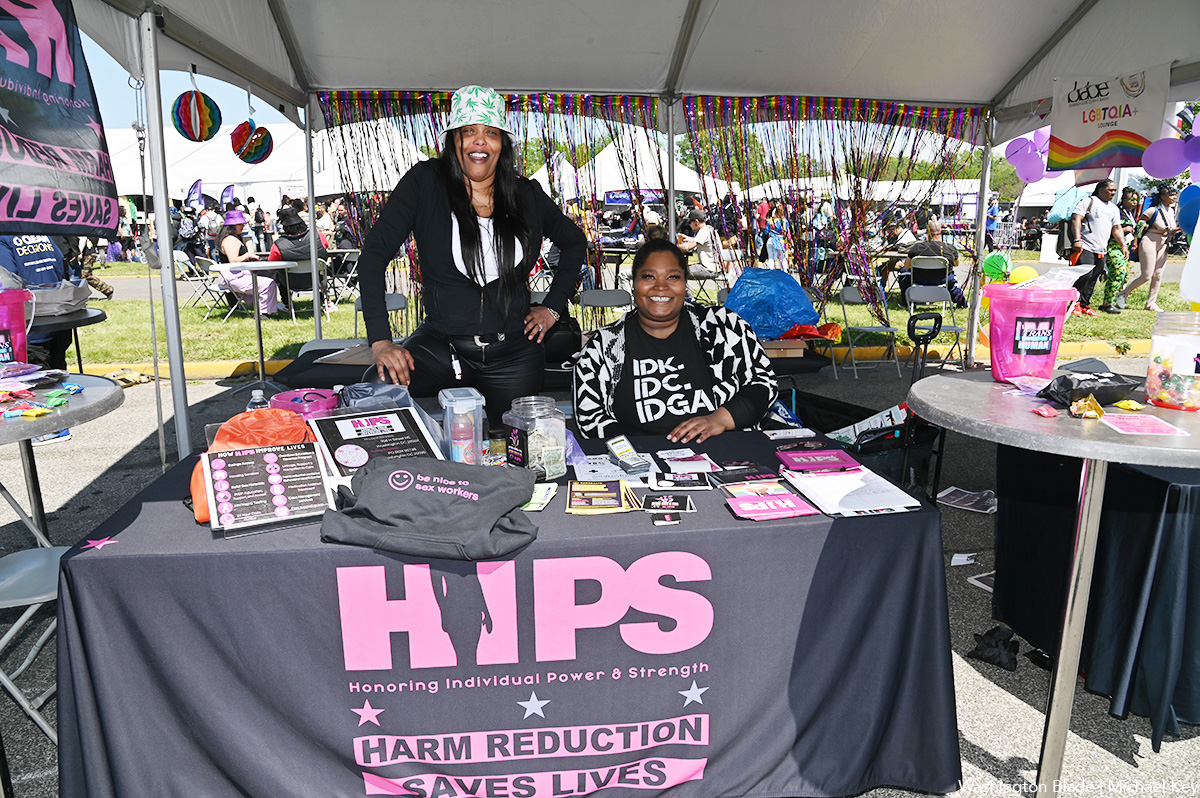
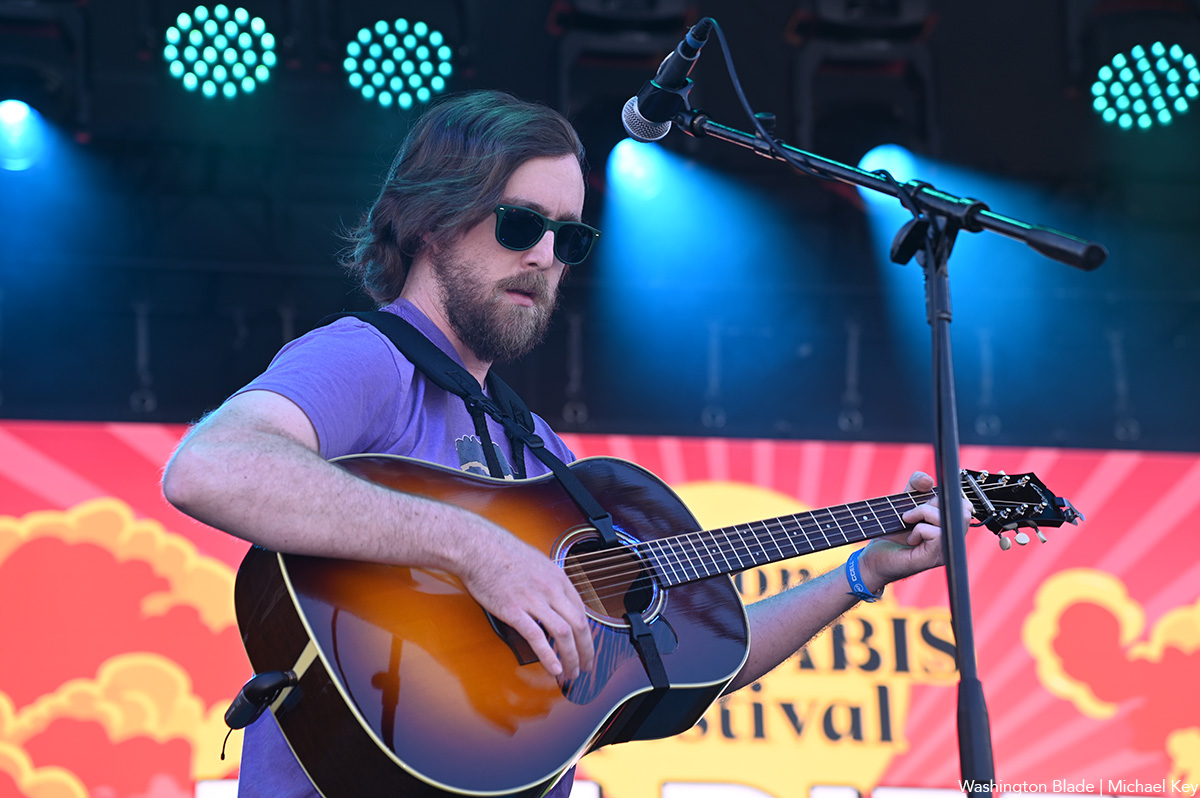
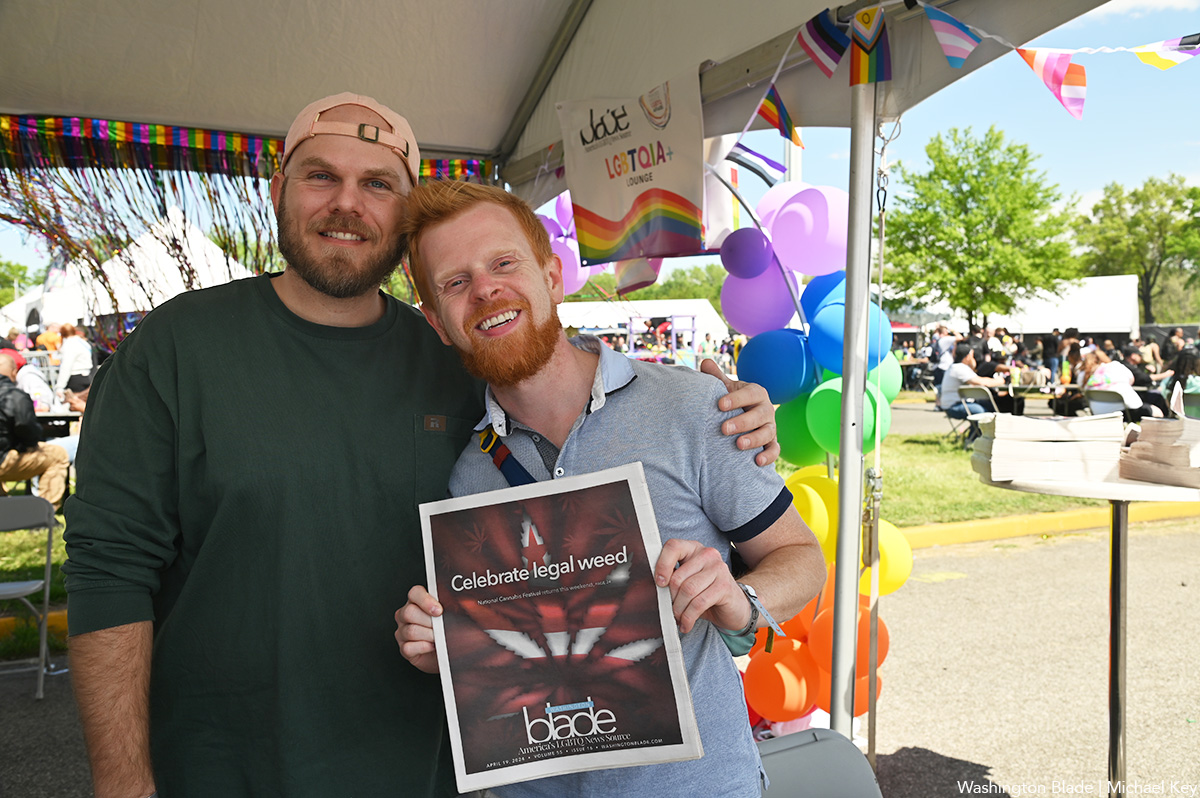
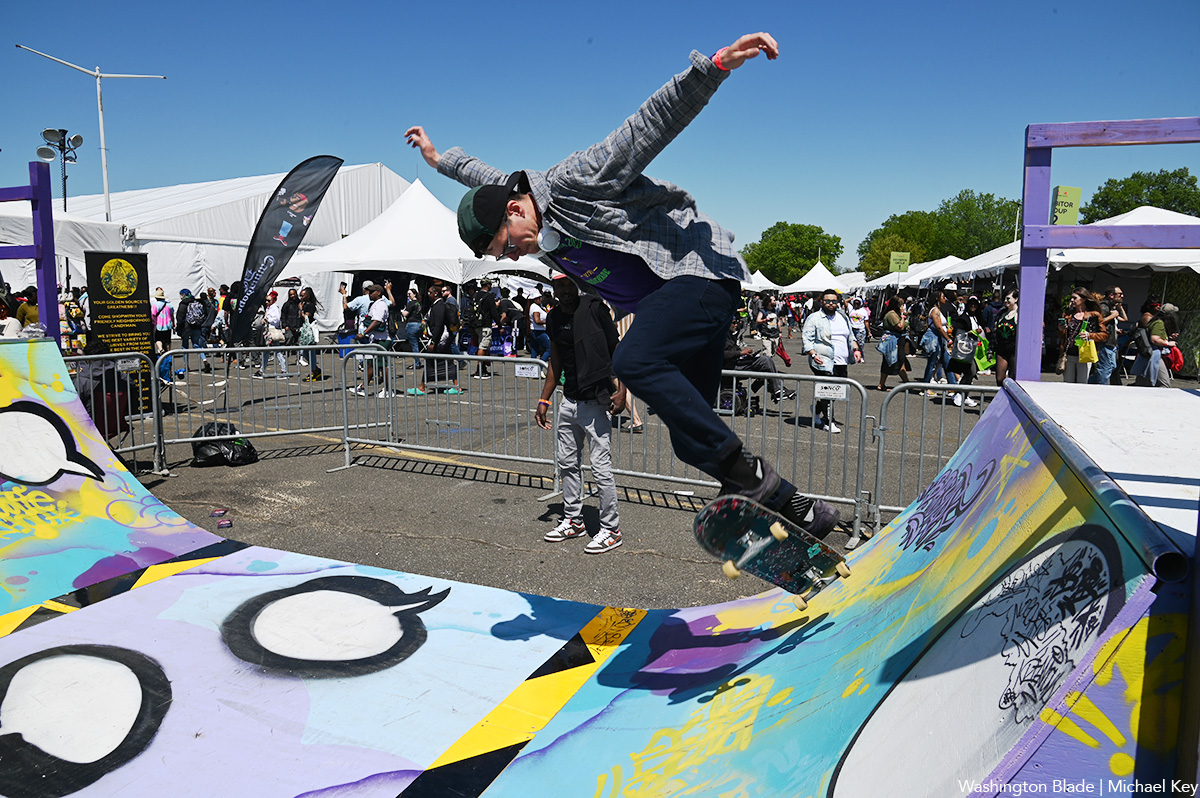
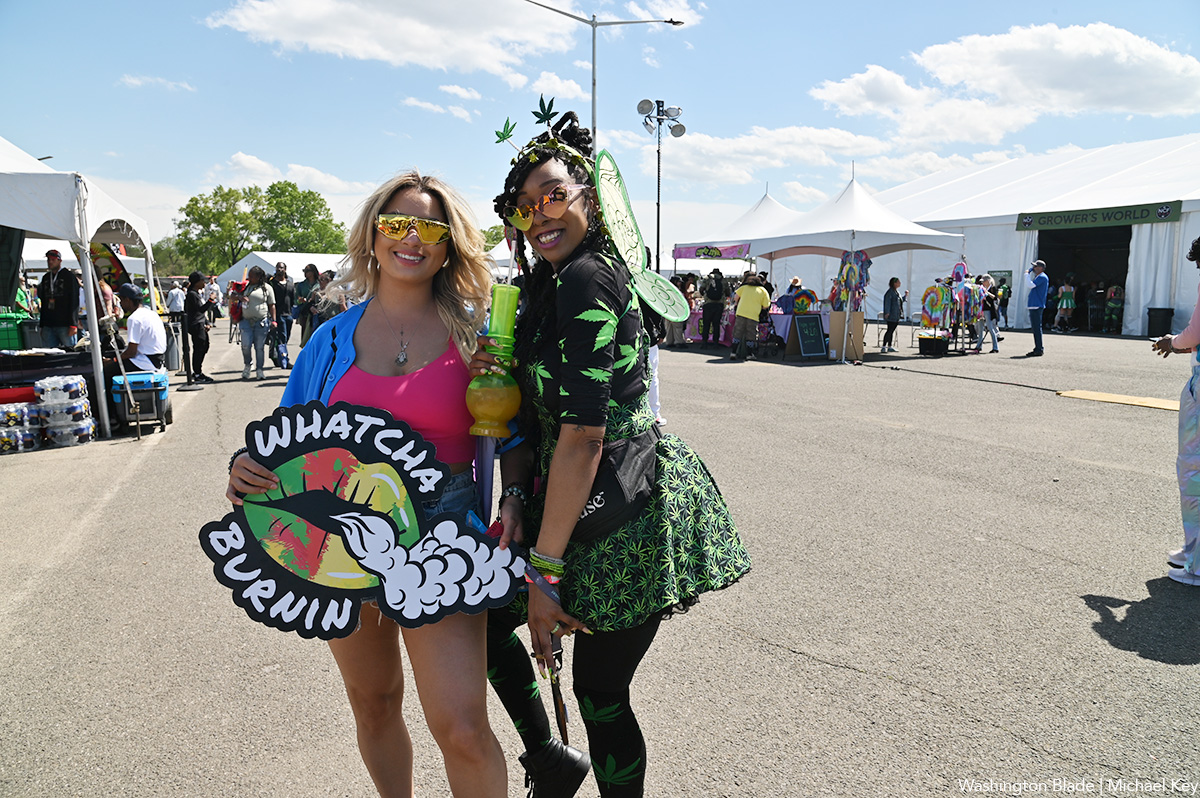
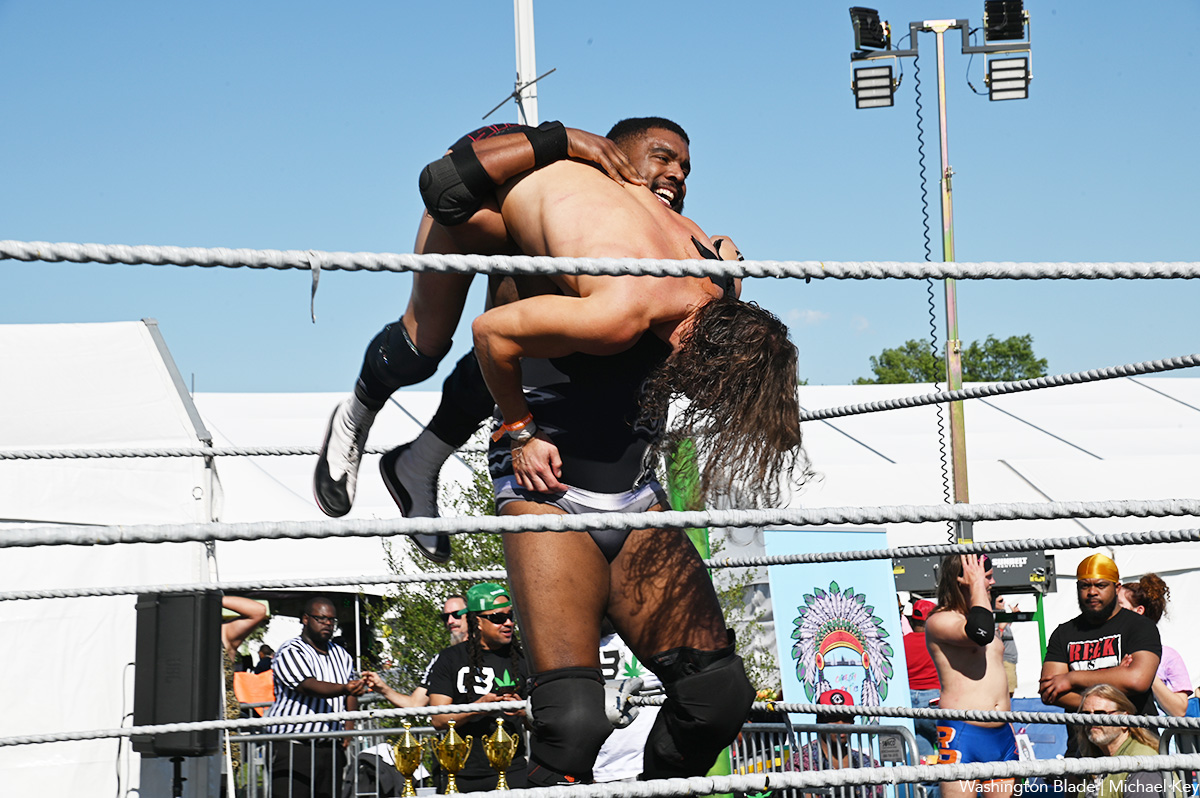
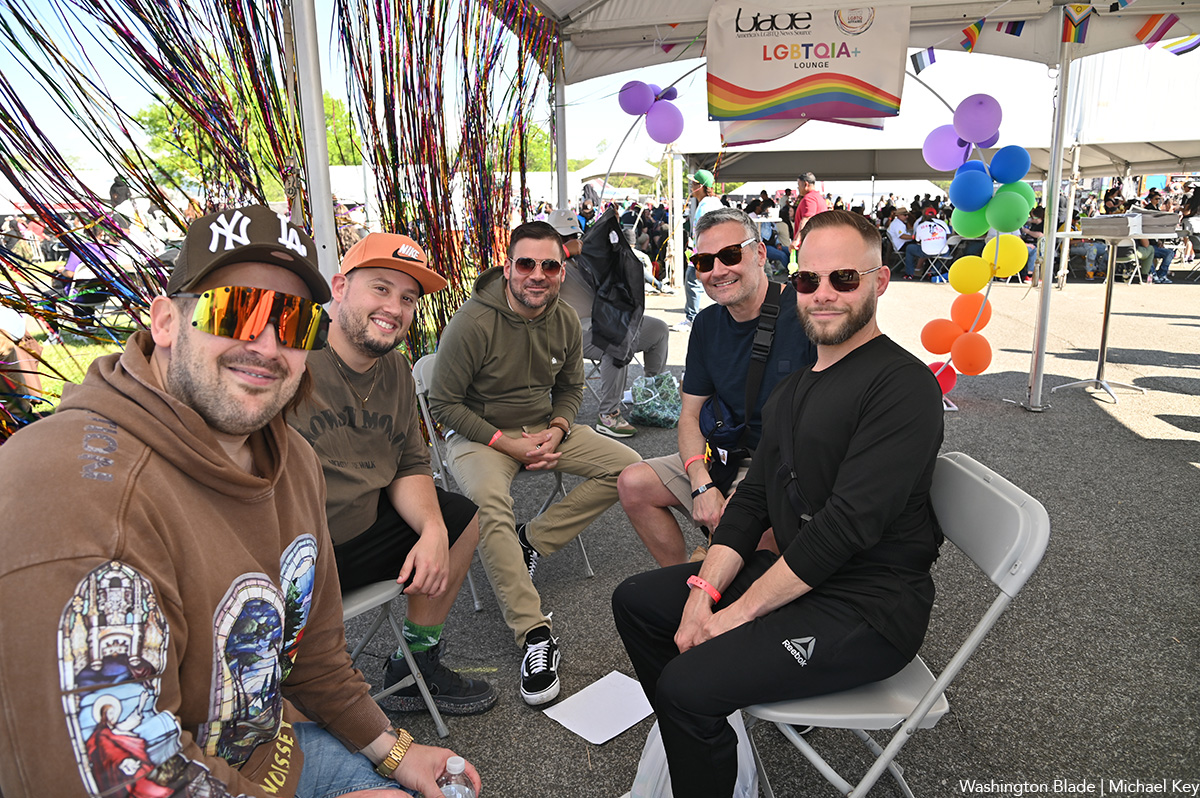
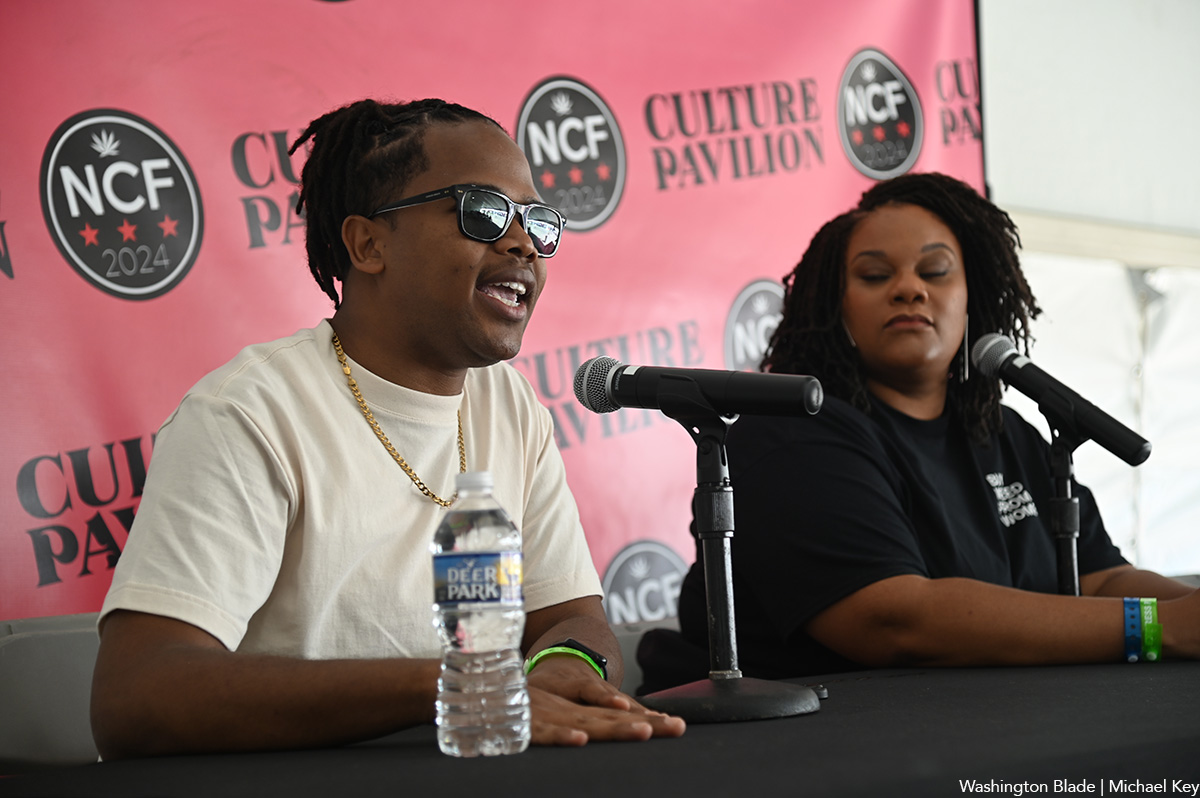
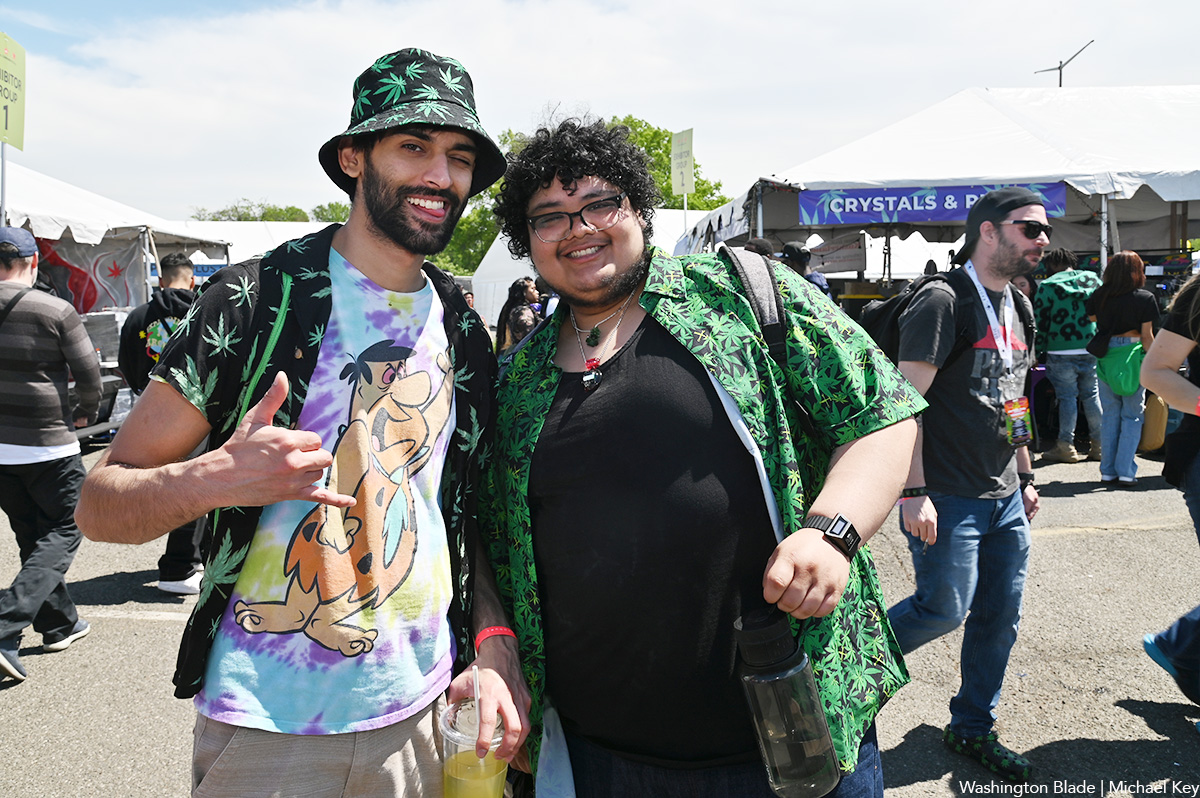
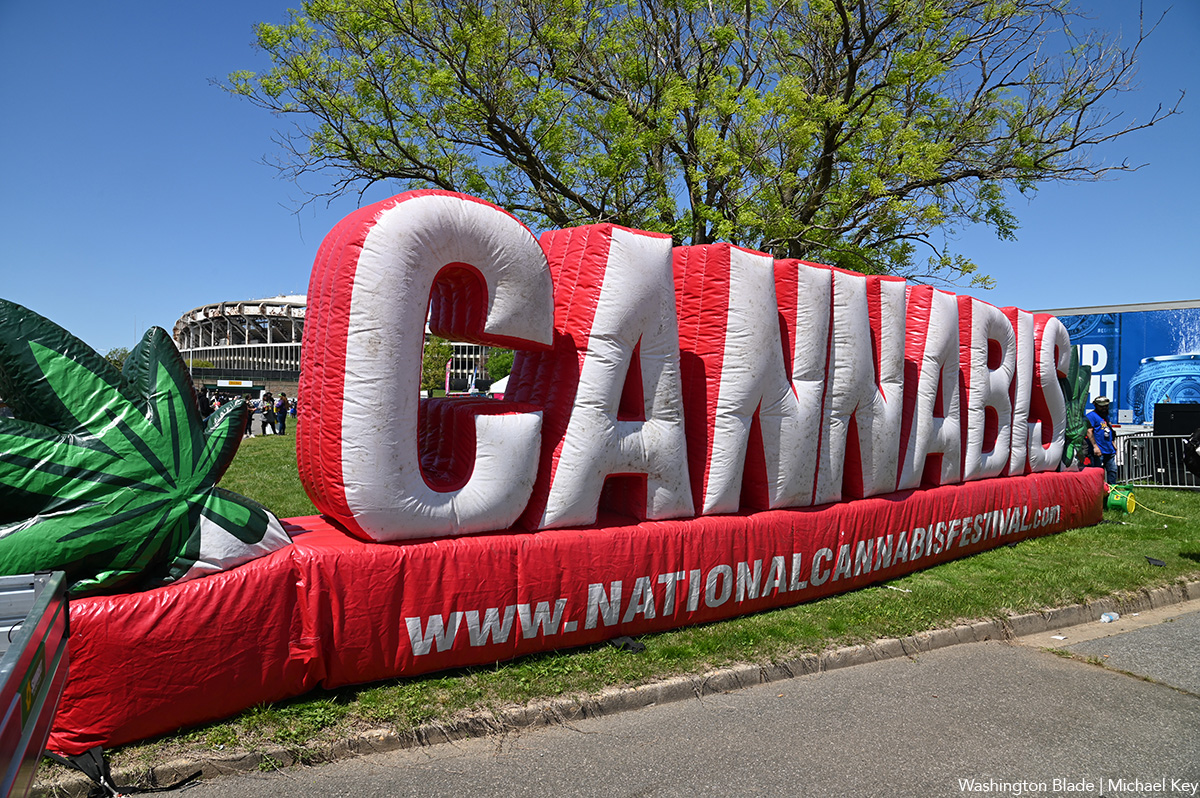
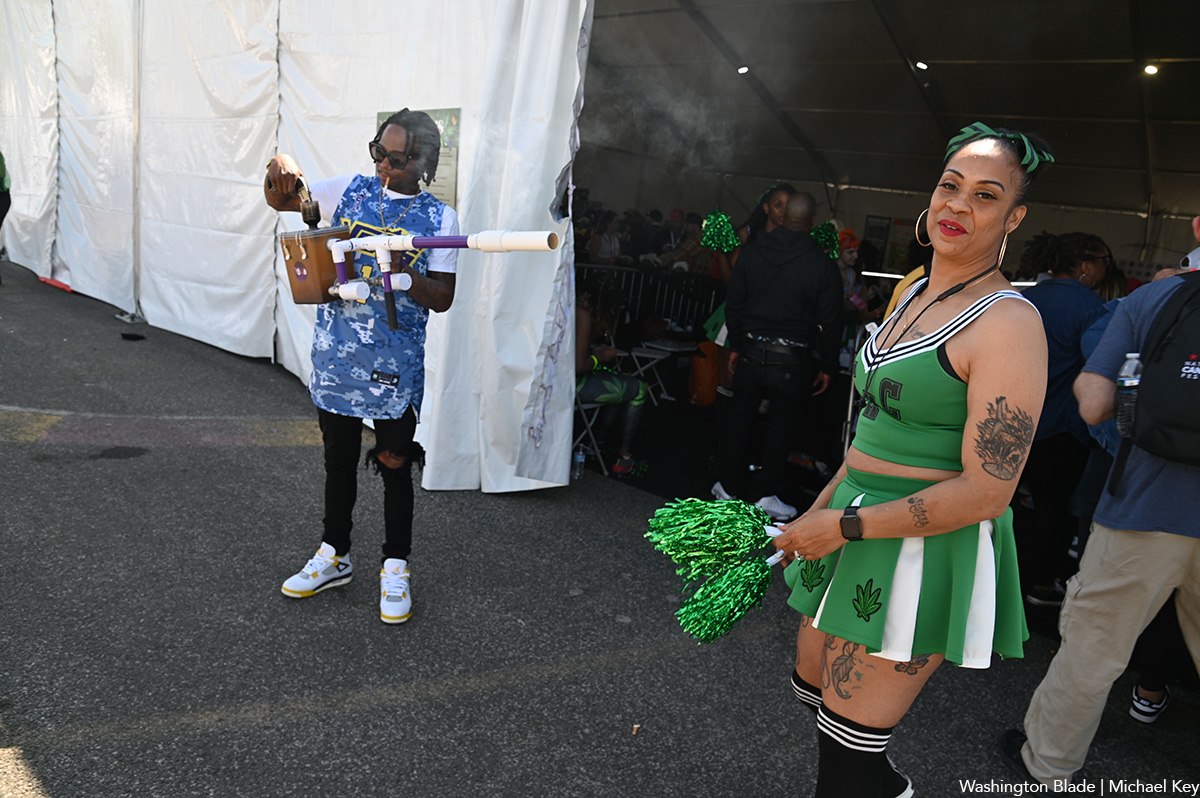

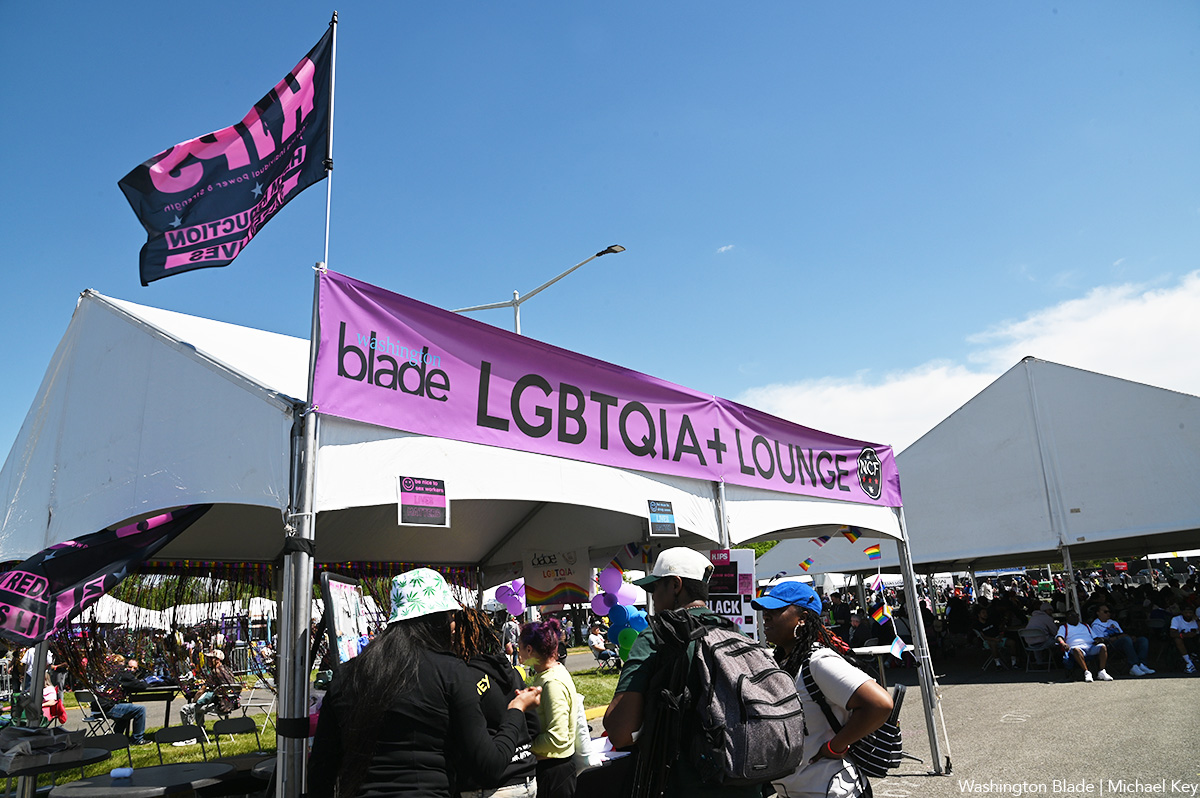
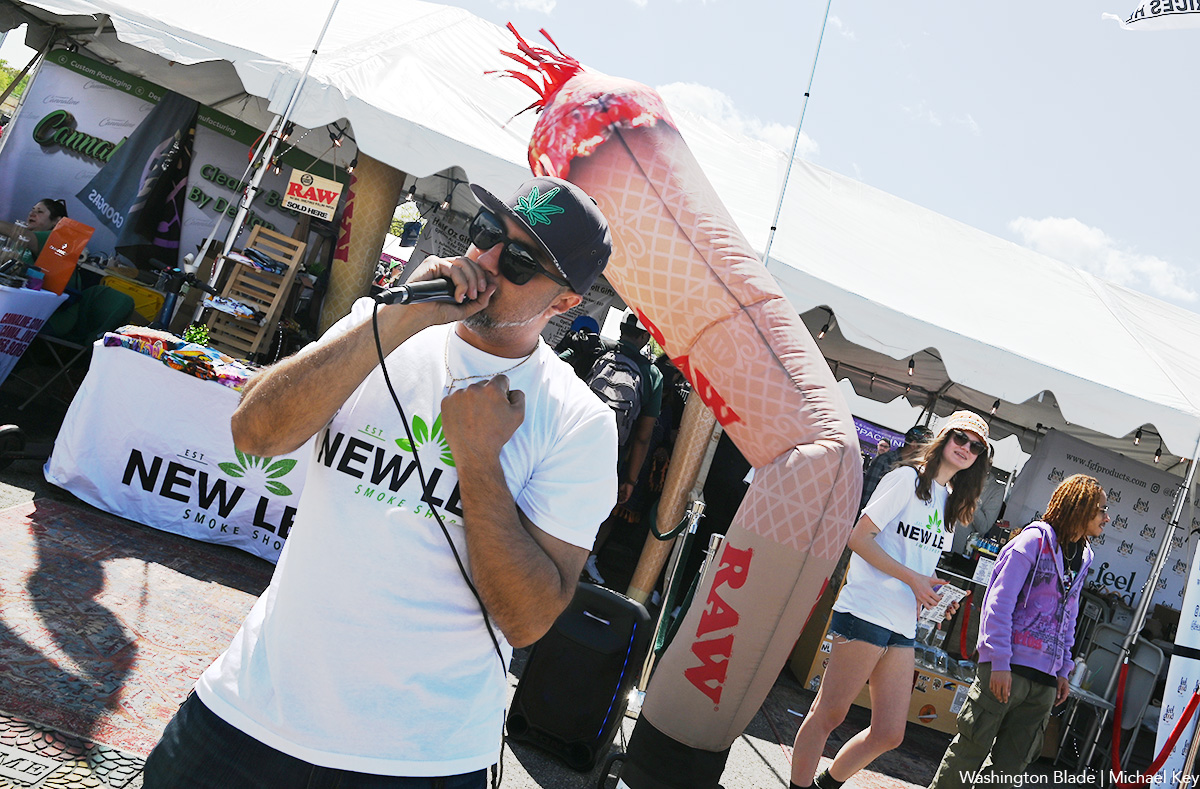
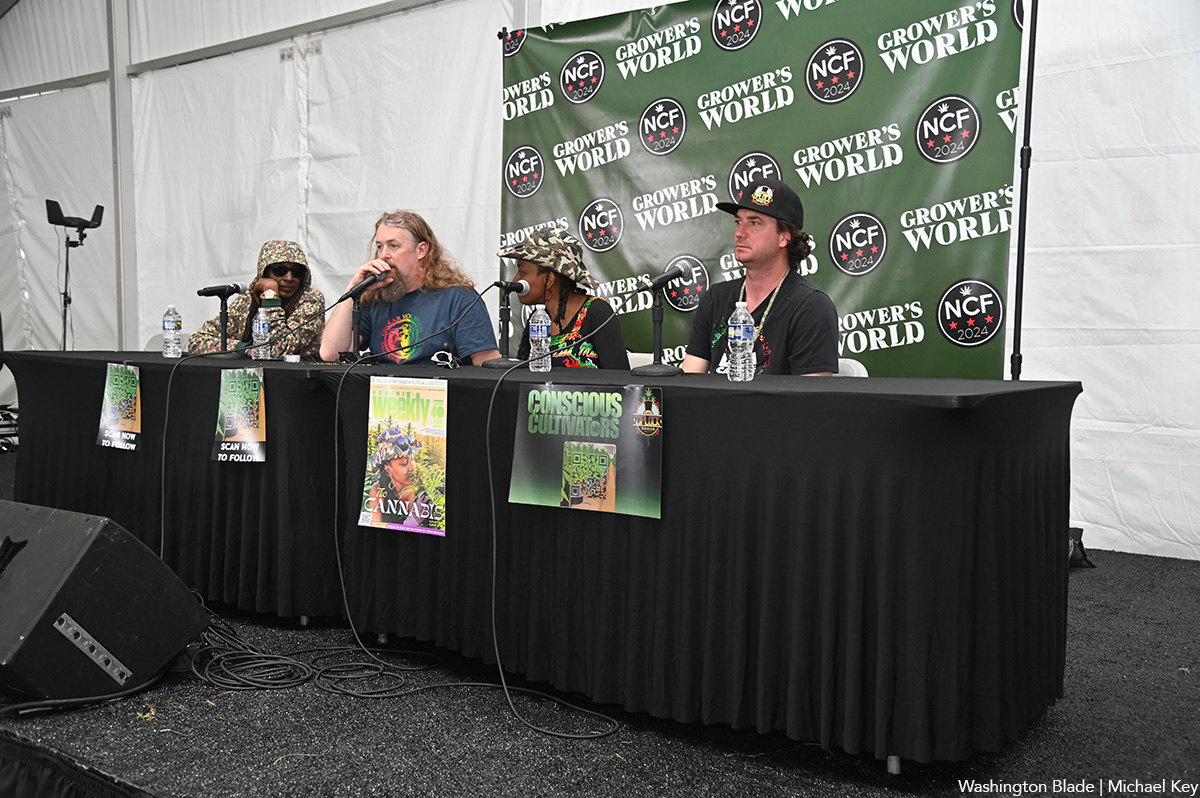
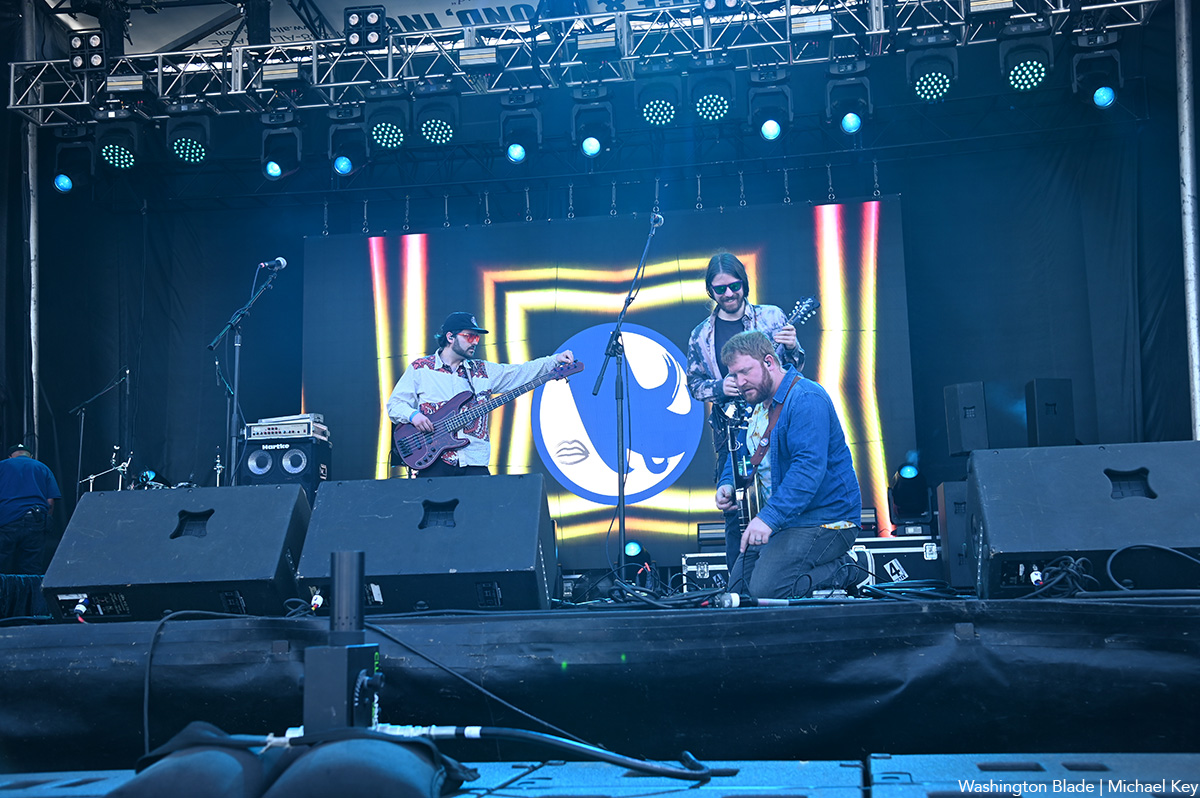
Covering the @NatlCannaFest at RFK Stadium for @WashBlade . Stop by the LGBTQ+ booth and pick up a paper if you are here. pic.twitter.com/is7hnsaPns
— Michael Patrick Key (@MichaelKeyWB) April 20, 2024
Theater
‘Amm(i)gone’ explores family, queerness, and faith
A ‘fully autobiographical’ work from out artist Adil Mansoor
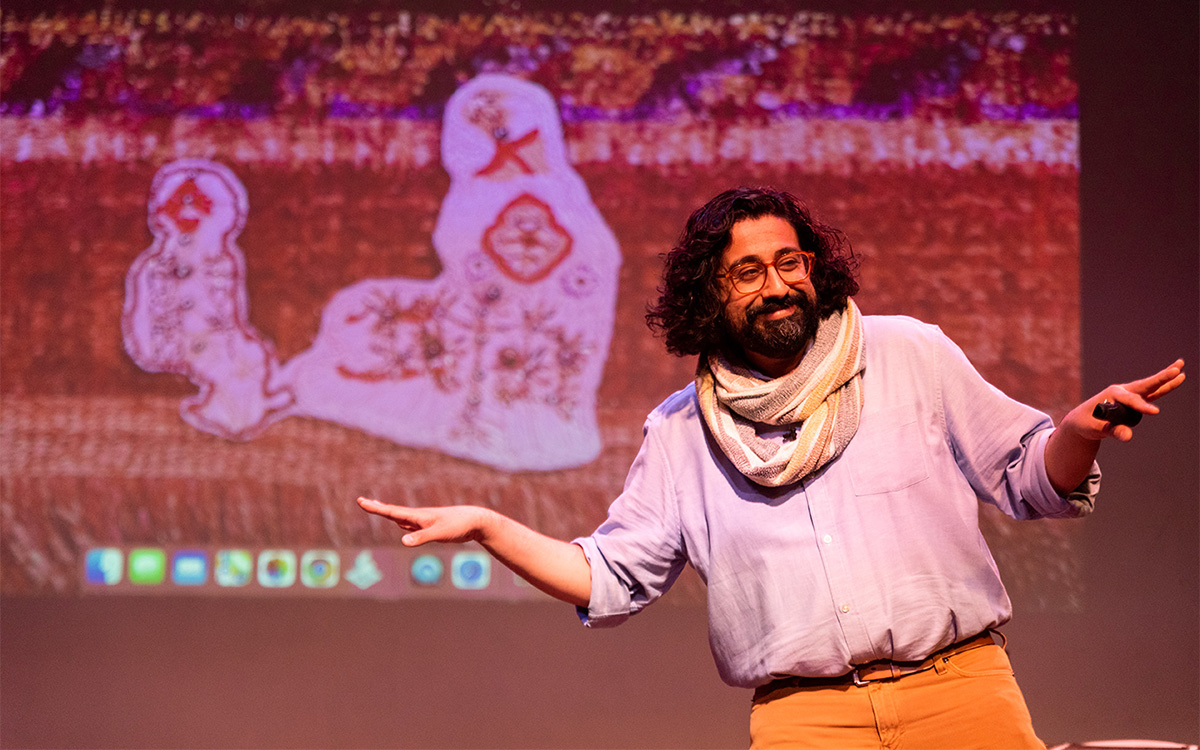
‘Amm(i)gone’
Thorough May 12
Woolly Mammoth Theatre
641 D St., N.W.
$60-$70
Woollymammoth.net
“Fully and utterly autobiographical.” That’s how Adil Mansoor describes “Amm(i)gone,” his one-man work currently playing at Woolly Mammoth Theatre.
Both created and performed by out artist Mansoor, it’s his story about inviting his Pakistani mother to translate Sophocles’s Greek tragedy “Antigone” into Urdu. Throughout the journey, there’s an exploration of family, queerness, and faith,as well as references to teachings from the Quran, and audio conversations with his Muslim mother.
Mansoor, 38, grew up in the suburbs of Chicago and is now based in Pittsburgh where he’s a busy theater maker. He’s also the founding member of Pittsburgh’s Hatch Arts Collective and the former artistic director of Dreams of Hope, an LGBTQ youth arts organization.
WASHINGTON BLADE: What spurred you to create “Amm(i)gone”?
ADIL MANSOOR: I was reading a translation of “Antigone” a few years back and found myself emotionally overwhelmed. A Theban princess buries her brother knowing it will cost her, her own life. It’s about a person for whom all aspirations are in the afterlife. And what does that do to the living when all of your hopes and dreams have to be reserved for the afterlife?
I found grant funding to pay my mom to do the translation. I wanted to engage in learning. I wanted to share theater but especially this ancient tragedy. My mother appreciated the characters were struggling between loving one another and their beliefs.
BLADE: Are you more director than actor?
MANSOOR: I’m primarily a director with an MFA in directing from Carnegie Mellon. I wrote, directed, and performed in this show, and had been working on it for four years. I’ve done different versions including Zoom. Woolly’s is a new production with the same team who’ve been involved since the beginning.
I love solo performance. I’ve produced and now teach solo performance and believe in its power. And I definitely lean toward “performance” and I haven’t “acted” since I was in college. I feel good on stage. I was a tour guide and do a lot of public speaking. I enjoy the attention.
BLADE: Describe your mom.
MANSOOR: My mom is a wonderfully devout Muslim, single mother, social worker who discovered my queerness on Google. And she prays for me.
She and I are similar, the way we look at things, the way we laugh. But different too. And those are among the questions I ask in this show. Our relationship is both beautiful and complicated.
BLADE: So, you weren’t exactly hiding your sexuality?
MANSOOR: In my mid-20s, I took time to talk with friends about our being queer with relation to our careers. My sexuality is essential to the work. As the artistic director at Dreams of Hope, part of the work was to model what it means to be public. If I’m in a room with queer and trans teenagers, part of what I’m doing is modeling queer adulthood. The way they see me in the world is part of what I’m putting out there. And I want that to be expansive and full.
So much of my work involves fundraising and being a face in schools. Being out is about making safe space for queer young folks.
BLADE: Have you encountered much Islamophobia?
MANSOOR: When 9/11 happened, I was a sophomore in high school, so yes. I faced a lot then and now. I’ve been egged on the street in the last four months. I see it in the classroom. It shows up in all sorts of ways.
BLADE: What prompted you to lead your creative life in Pittsburgh?
MANSOOR: I’ve been here for 14 years. I breathe with ease in Pittsburgh. The hills and the valleys and the rust of the city do something to me. It’s beautiful, it’ affordable, and there is support for local artists. There’s a lot of opportunity.
Still, the plan was to move to New York in September of 2020 but that was cancelled. Then the pandemic showed me that I could live in Pittsburgh and still have a nationally viable career.
BLADE: What are you trying to achieve with “Amm(i)gone”?
MANSOOR: What I’m sharing in the show is so very specific but I hear people from other backgrounds say I totally see my mom in that. My partner is Catholic and we share so much in relation to this.
I hope the work is embracing the fullness of queerness and how means so many things. And I hope the show makes audiences want to call their parents or squeeze their partners.




















